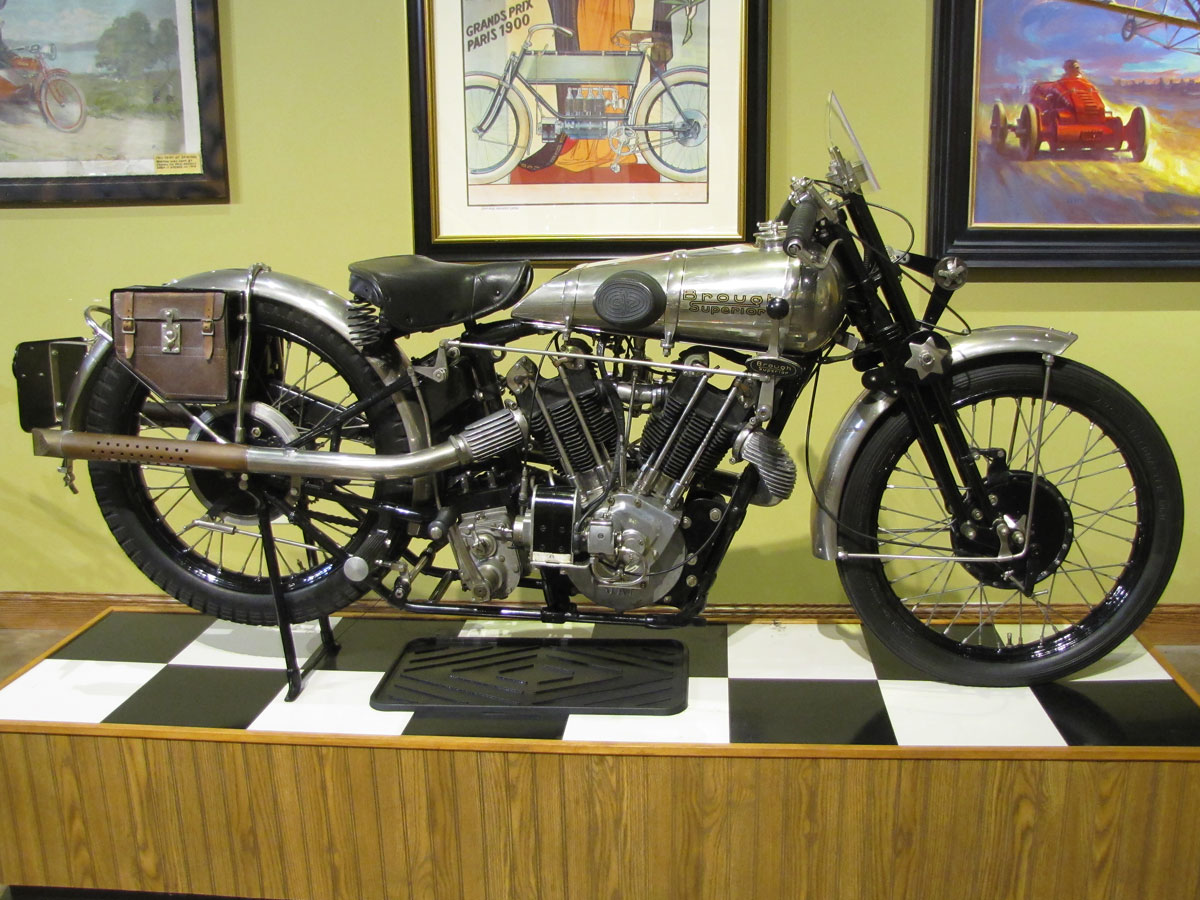
With the National Motorcycle Museum closing permanently in early September, 2023, we hope you’ll plan one last visit. And just to remind you of some of the more amazing motorcycles on display, here’s a story on George Brough and some of the amazing machines he manufactured. The Pendine (PEN-dine) is one of several Broughs you can look over on your visit.
George Brough, the son of William E. Brough, raced his father’s motorcycles, then went on to make his own, eventually dubbing them Brough-Superiors. George Brough’s personal SS80 became the first flat-head production motorcycle to hit 100 mph while lapping at the unique, banked, concrete-paved British speedway named Brooklands.
The Pendine was Brough’s high performance machine, semi-street legal, a production racer. But it’s also a feast for the eyes for anyone who enjoys fine machinery. Brough took great pains to separate his machines from the typical bikes of England at the time. Note the outboard pivot handlebar controls, the nickel plated fuel and oil tanks, the great finned exhaust manifolds and brake drums, the open valve train, grand nickel plated remote floats for the carburetor with an open velocity stack. Friction dampers have star motifs and the fuel tank transfer offers the Super Sport legend. Yet steel wheel rims are a purposeful black enamel.
“Every S.S.100 Pendine model is guaranteed to have been timed to exceed 110 m.p.h. before delivery to the customer,” is from the 1927 Brough sales catalog. Elegance, performance and limited production are what have made Brough (pronounced “bruff”) motorcycles world renowned as the best out of England and Europe before World War II; most would say they were the best in the world at the time.
In 1927 the thirst for speed was strong in England. George Brough was thirstier than most. Pendine Sands, a seven mile long, firm, flat expanse of beach on the south coast of Wales, some 220 miles west of London, was the place for land speed record runs. Excepting Glen Cutiss’s run on a one off motorcycle powered by a V8 aircraft engine, George Brough’s 1928 recorded speed of 130.6 mph on an SS100 was the fastest speed in the world for a solo motorcycle. Some report he blew the engine on the return run so there was no official record. Clearly the SS100 was a very fast machine in its day, and Brough capitalized on performance feats and striking appearance to promote his machines.
Each Pendine model was a SS100 fitted with what we would call today “a factory race kit.” A specially tuned high compression engine is installed and the magneto is driven by bevel gear. Carburetion was handled by a dual remote float carburetor. The sleek exhaust pipes are high level, baffles at the tips. Other modifications are lower handlebars, rear set footrests and typically no kick-starter. Brough manufactured few components in-house but rather sourced the best engines, transmissions, hubs, at one point even adapted the Harley-Davidson fork design. This SS100 is fitted with the J.A.P. KTOR twin-cam 998 cc 50° v-twin made by J.A. Prestwich of London and uses a Sturmey-Archer three speed gearbox.
Brough made motorcycles most would agree were “better than the sum of their parts.” Such was its sales success that when the bigger SS100 was launched in late 1924, the company was able to continue profitably in production through to 1939. And tracing Brough design history, it’s interesting to see the wide range of engines, even chassis layouts Brough experimented with. “Boxer” and in-line fours were used in prototypes. Some years back an auction brought to light a three-wheeled prototype for sidecar work that used a pair of wheels at the rear just inches apart!
Interestingly, Brough’s most prolific year was in 1927 with a total of 226 motorcycles built; this SS100 was approximately number 383 somewhere between 1924 and 1940. Broughs were made from 1921 to 1940 with World War II halting production. Since Brough relied on other makers for engines and temporarily there were few after the War, George Brough’s company ceased production permanently. Capitalizing on a great history, much like Polaris has done with Indian, today a firm with rights to the name is once again building Brough-Superiors, thoroughly modern motorcycles which bear an outward resemblance to the originals.
The Brough-Superior Pendine is located in the Best of the Best gallery and was always one of John Parham’s favorites. In the background you can see other “best” machines including the Curtiss, Thor, Reading-Standard, Sears and John’s personal yellow Panhead. With the National Motorcycle Museum closing in early September 2023, we trust you’ll plan a visit soon and take in the fine collection.
Specifications:
-
- Engine: 998 cc, OHV, Air-cooled, 50° V-twin
- Bore & Stroke: 85mm x 86mm
- Carburetor: Binks
- Ignition: Lucas Magneto
- Horsepower: 45HP @ 5,000 RPM
- Transmission: 3-speed, 4-stud Sturmey-Archer Gearbox, Hand Shift
- Primary: Chain Driven
- Clutch: Multi-Plate
- Final Drive: Chain
- Frame: Duplex Cradle, Lugged, Steel Tubing, Brazed
- Fork: Castle Cantilever Type
- Wheelbase: 60 Inches
- Wheels/Tires: 3.00 x 19 / 3.00 x 19
- Brakes: Drum, Front & Rear
- Rear Suspension: Sprung Seat
- Price New: 160 British Pounds / $256 US Dollars
Leave a Reply
Want to join the discussion?Feel free to contribute!

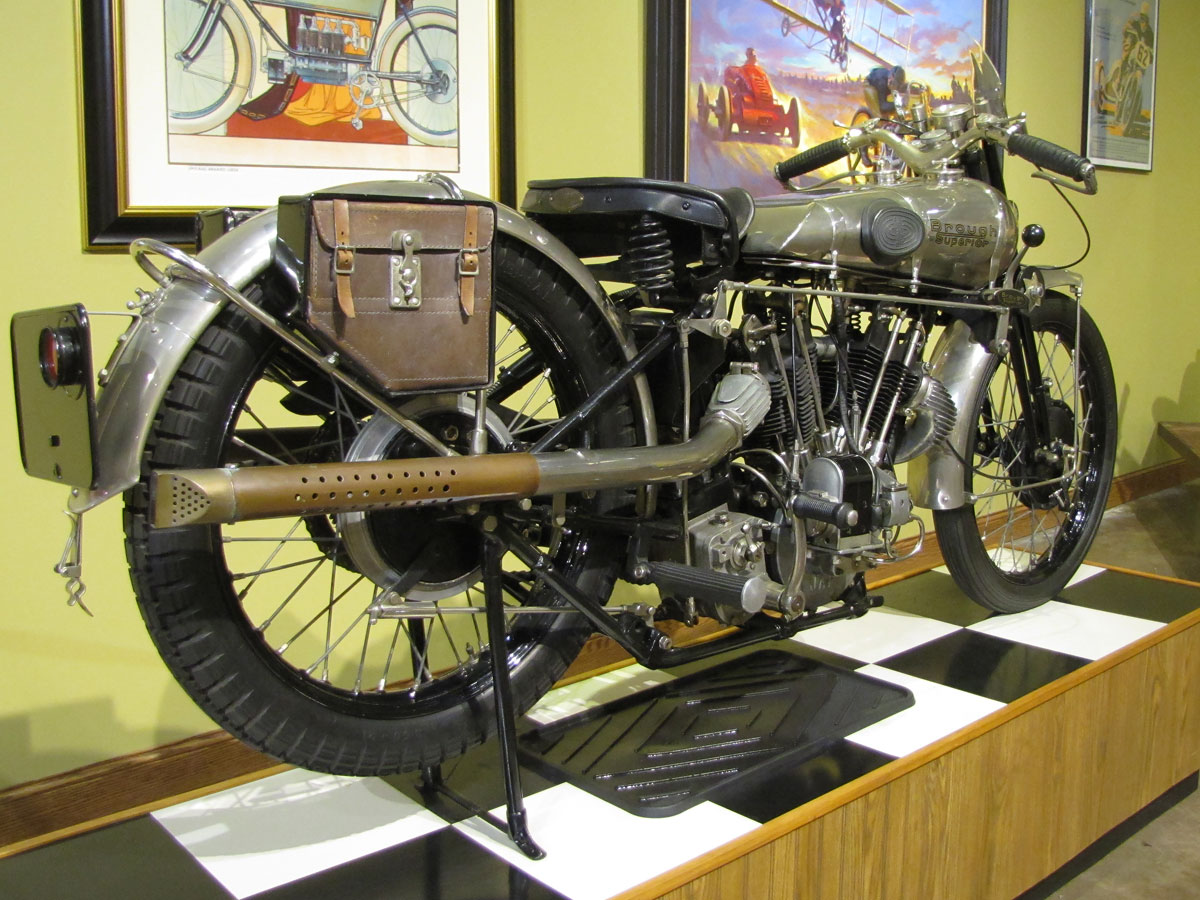
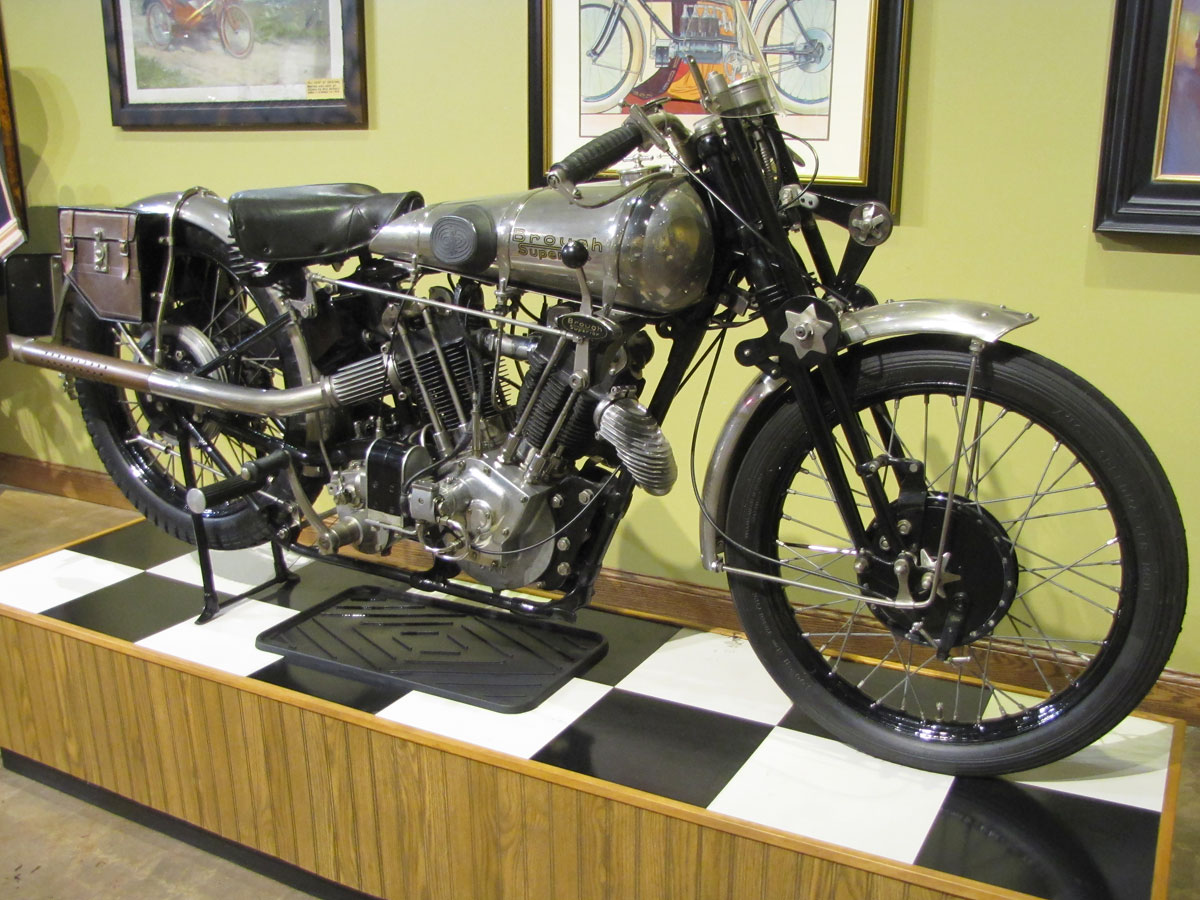
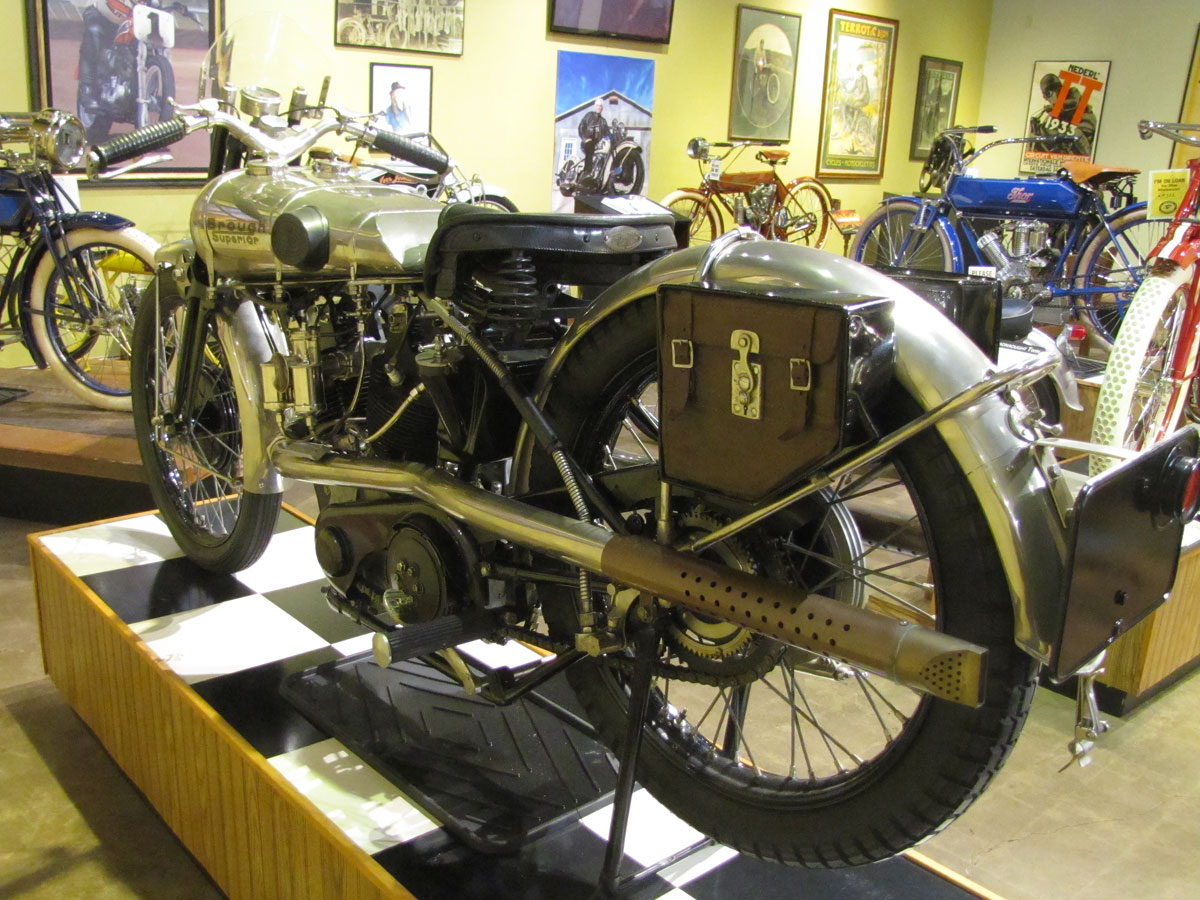
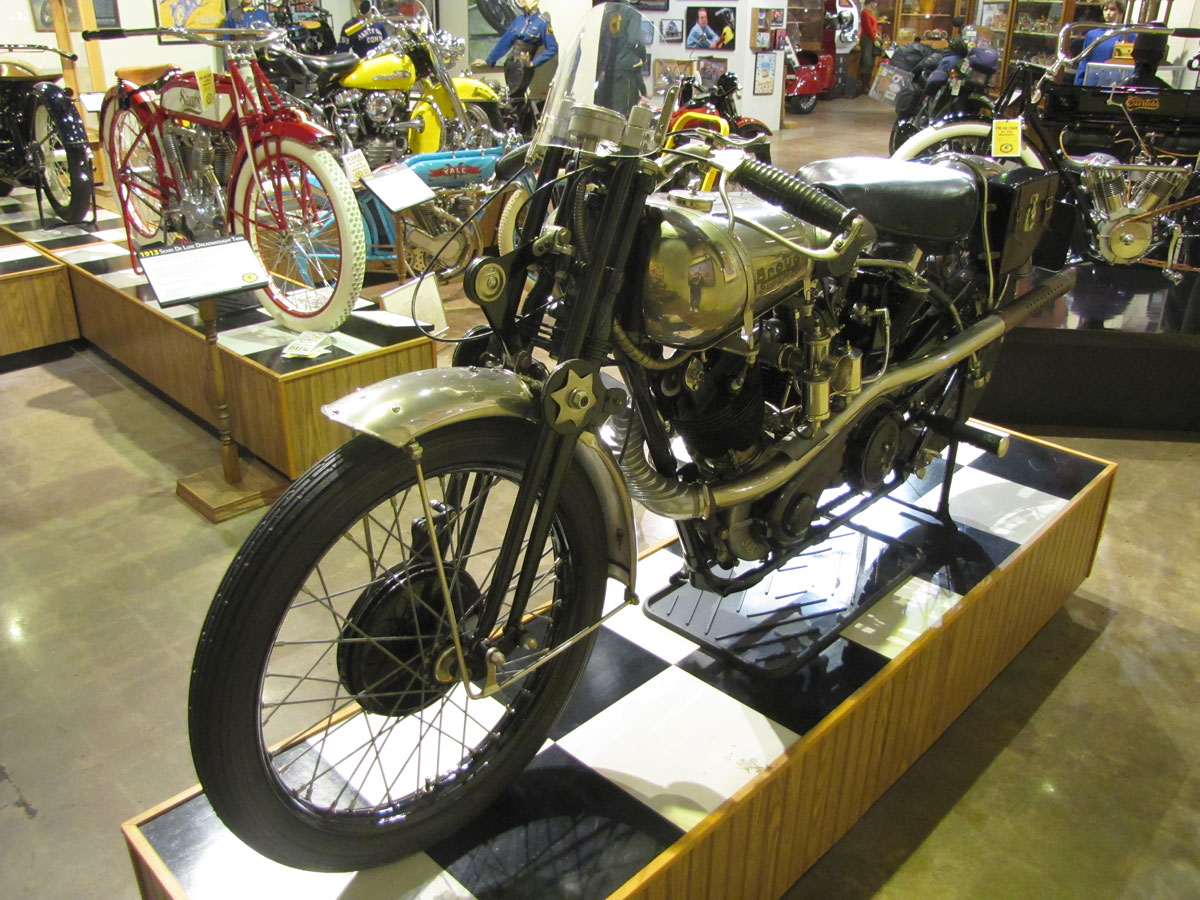
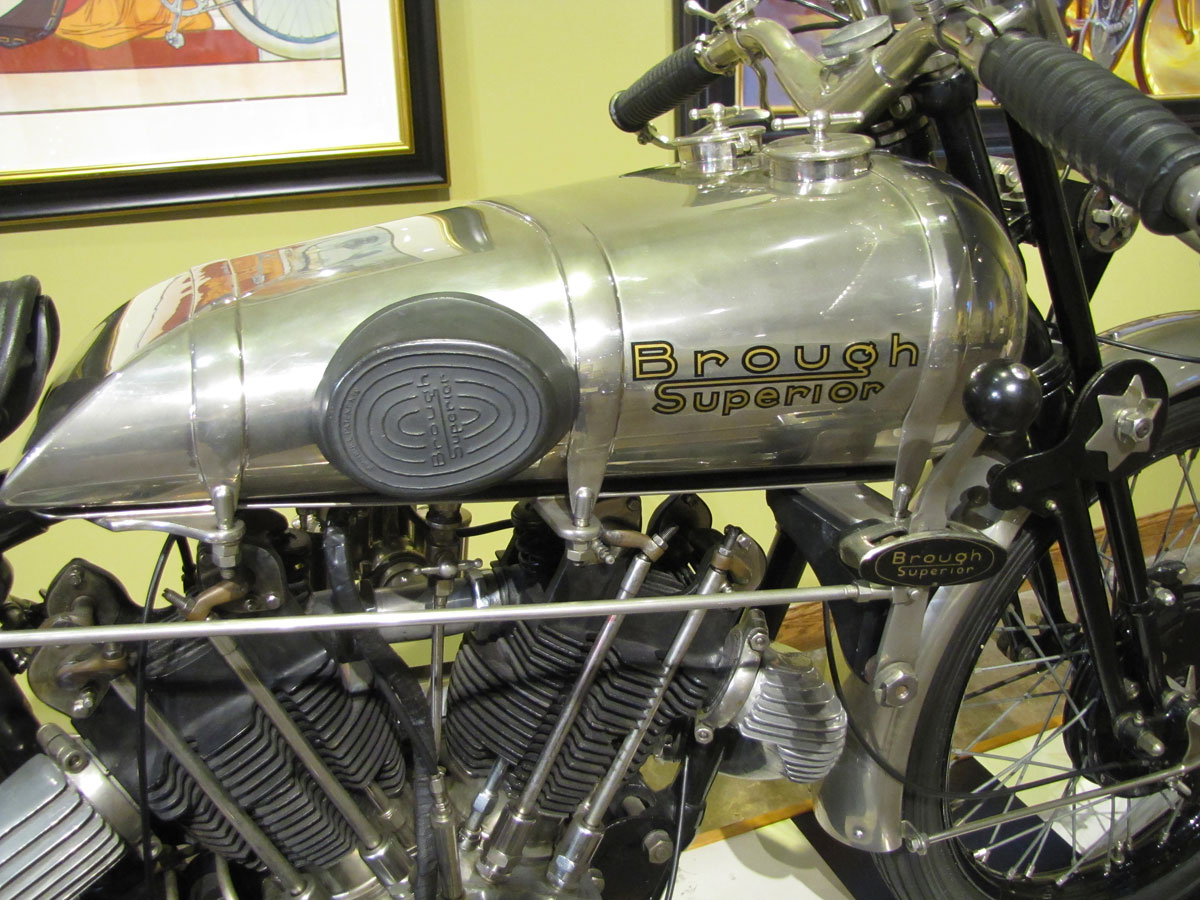
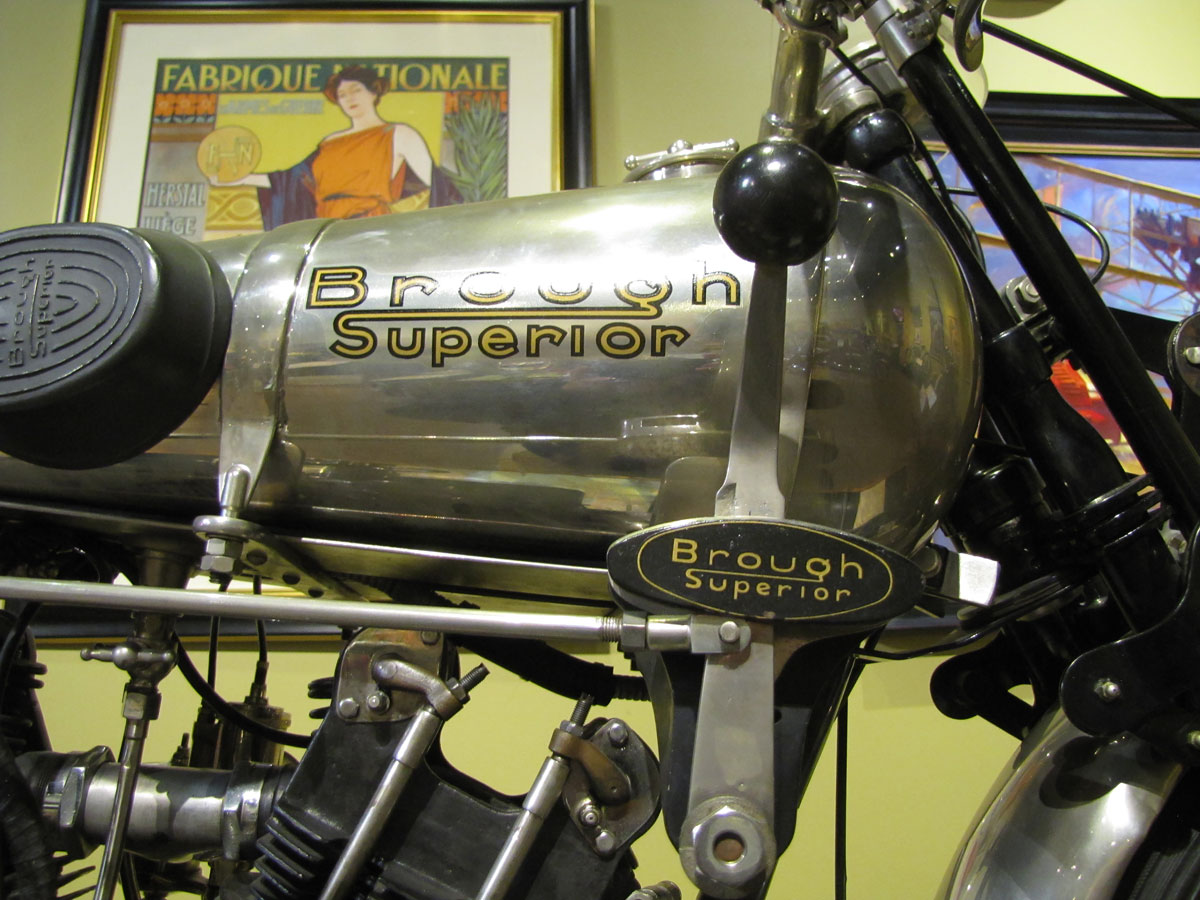
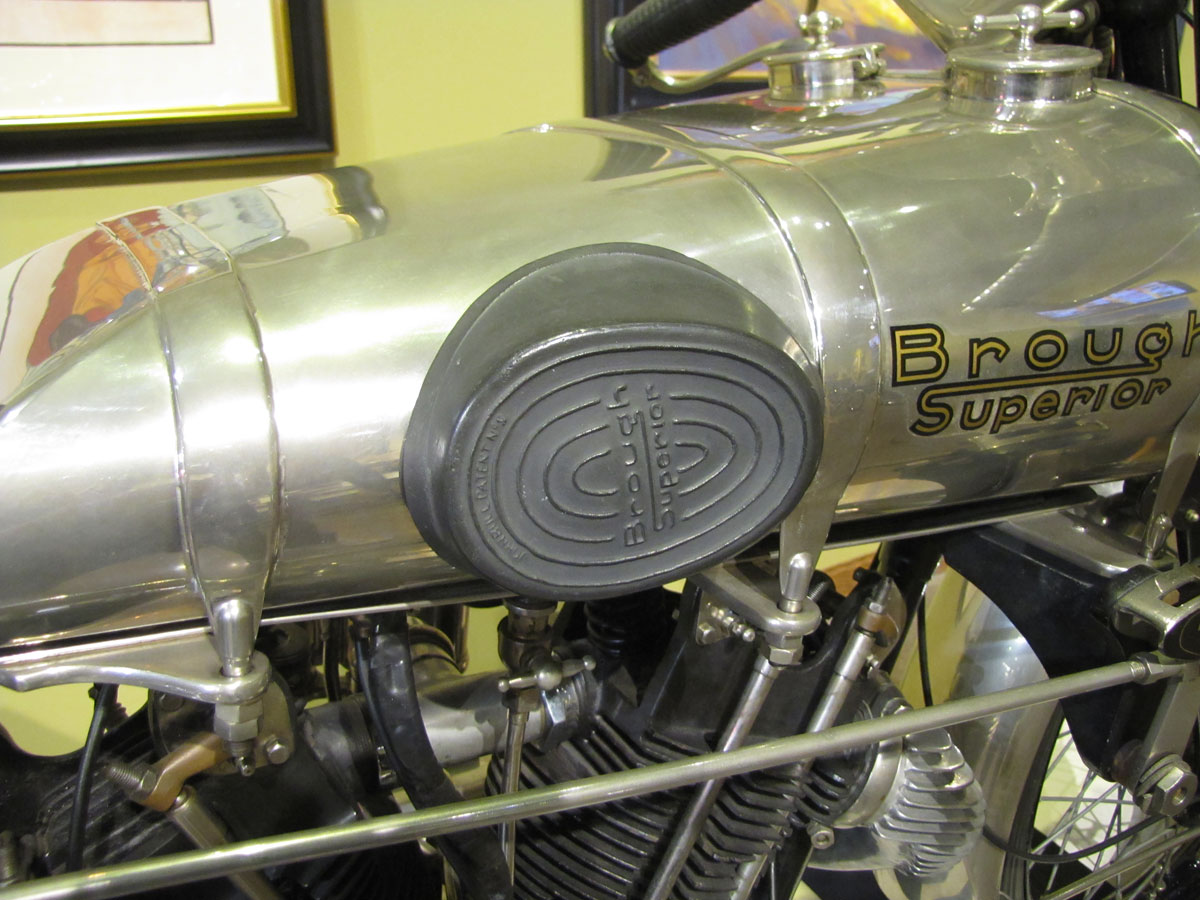
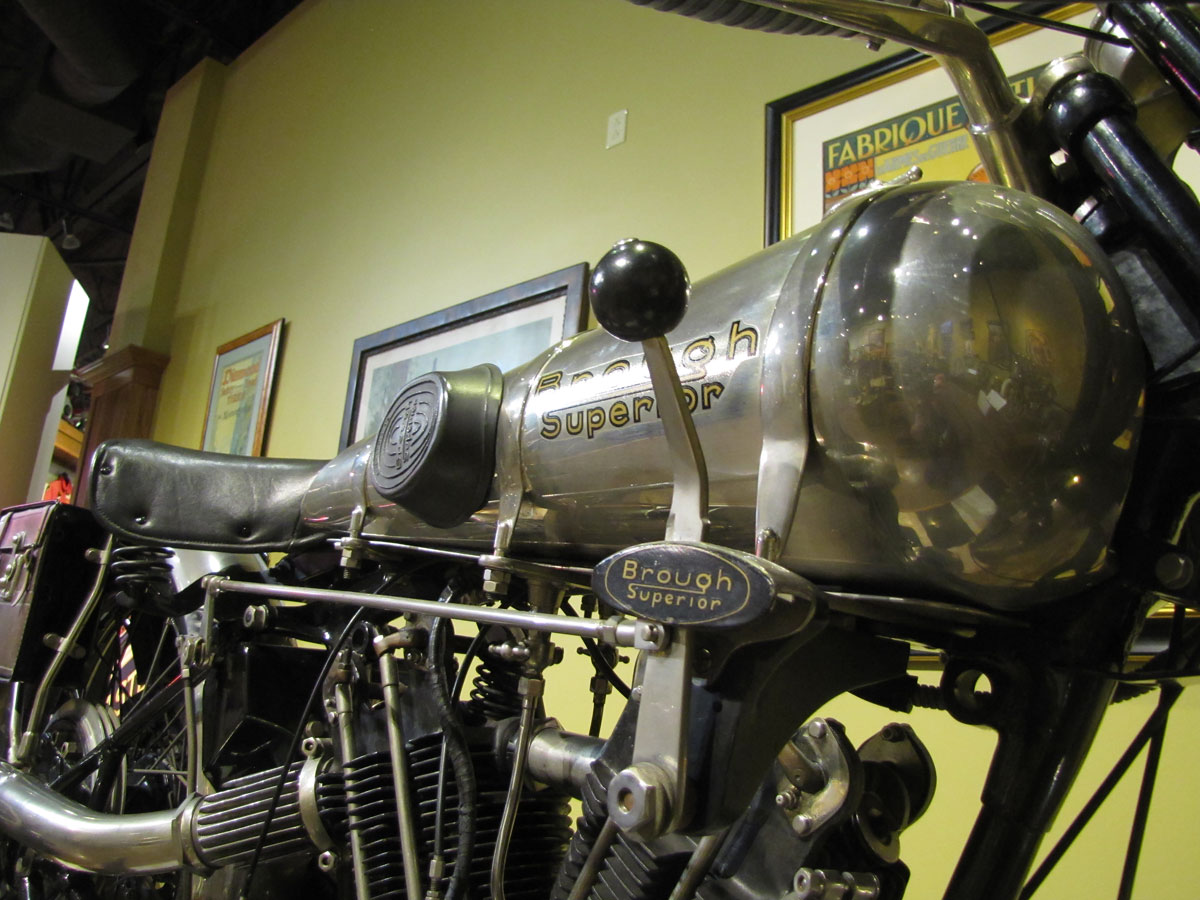
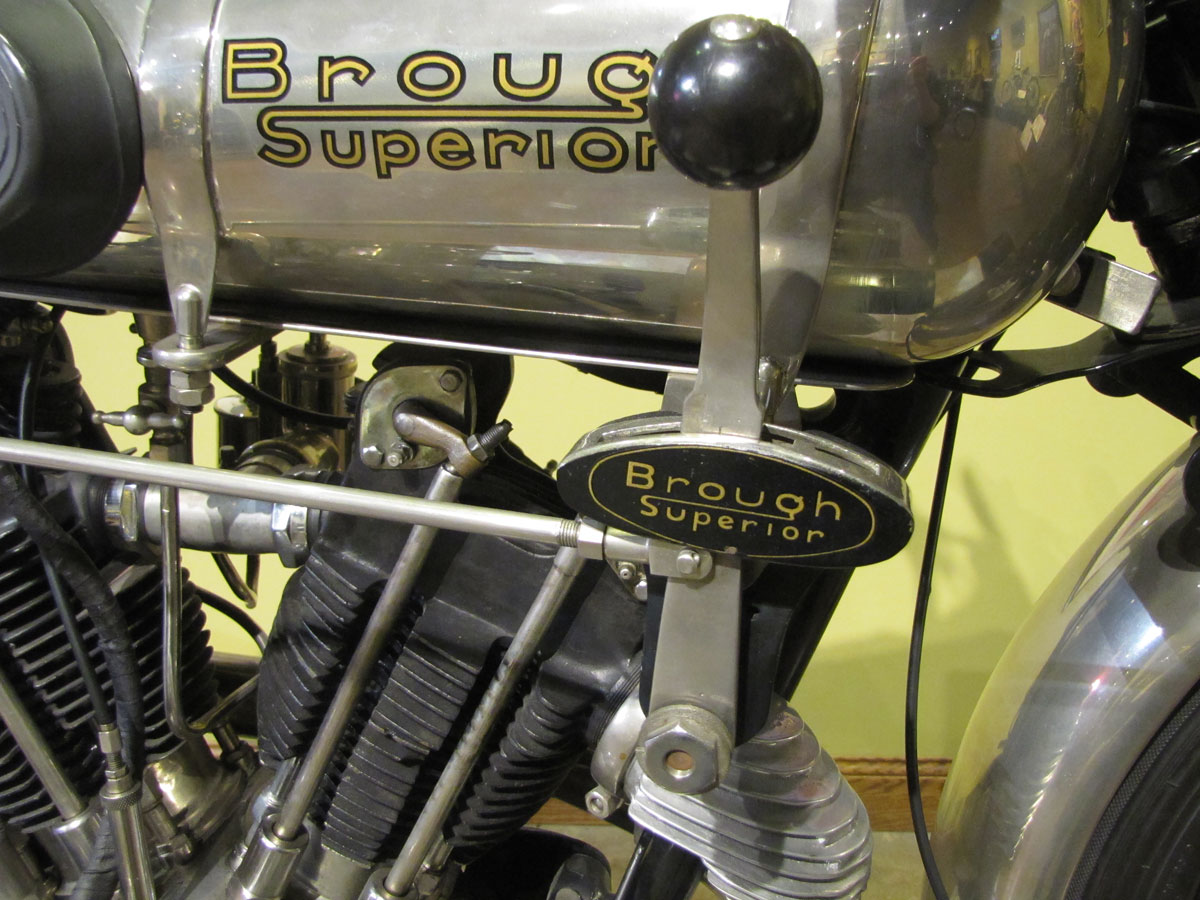
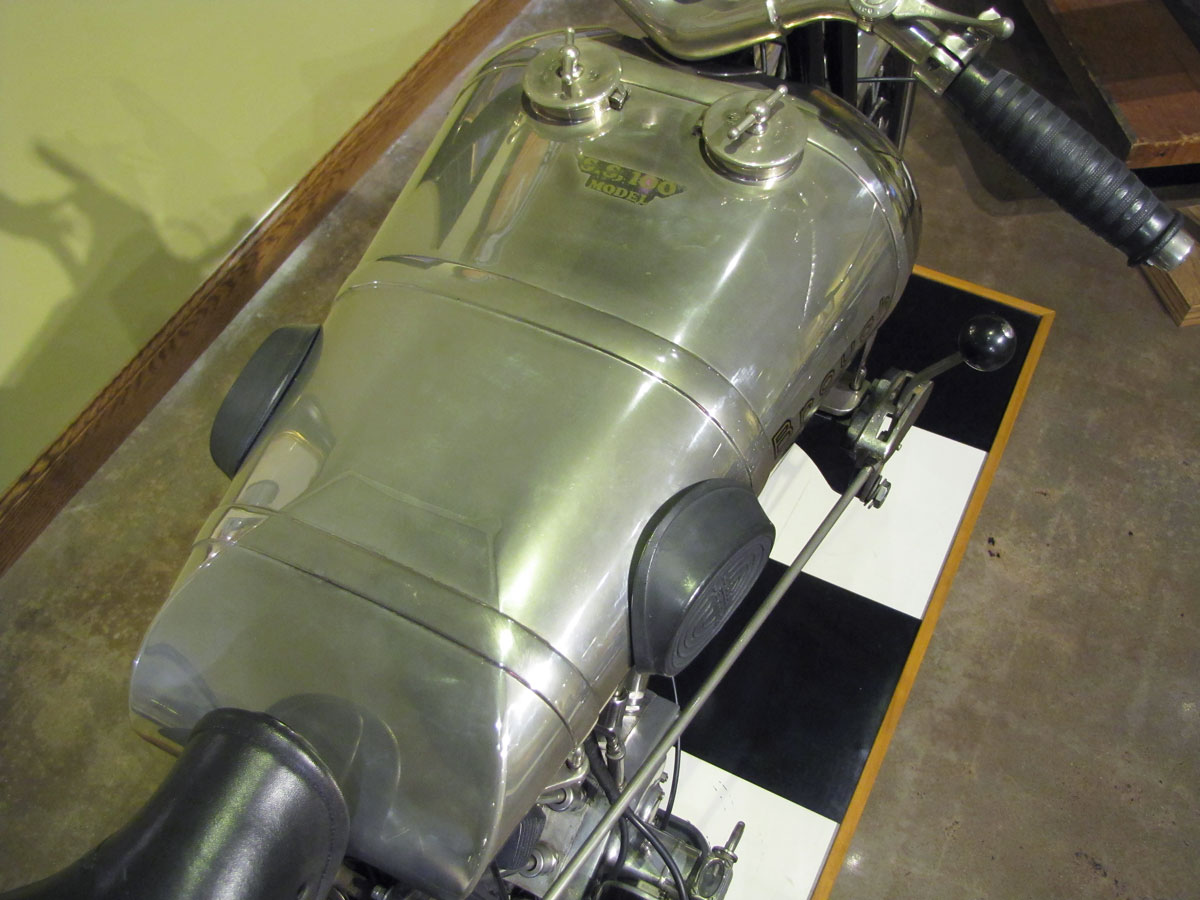
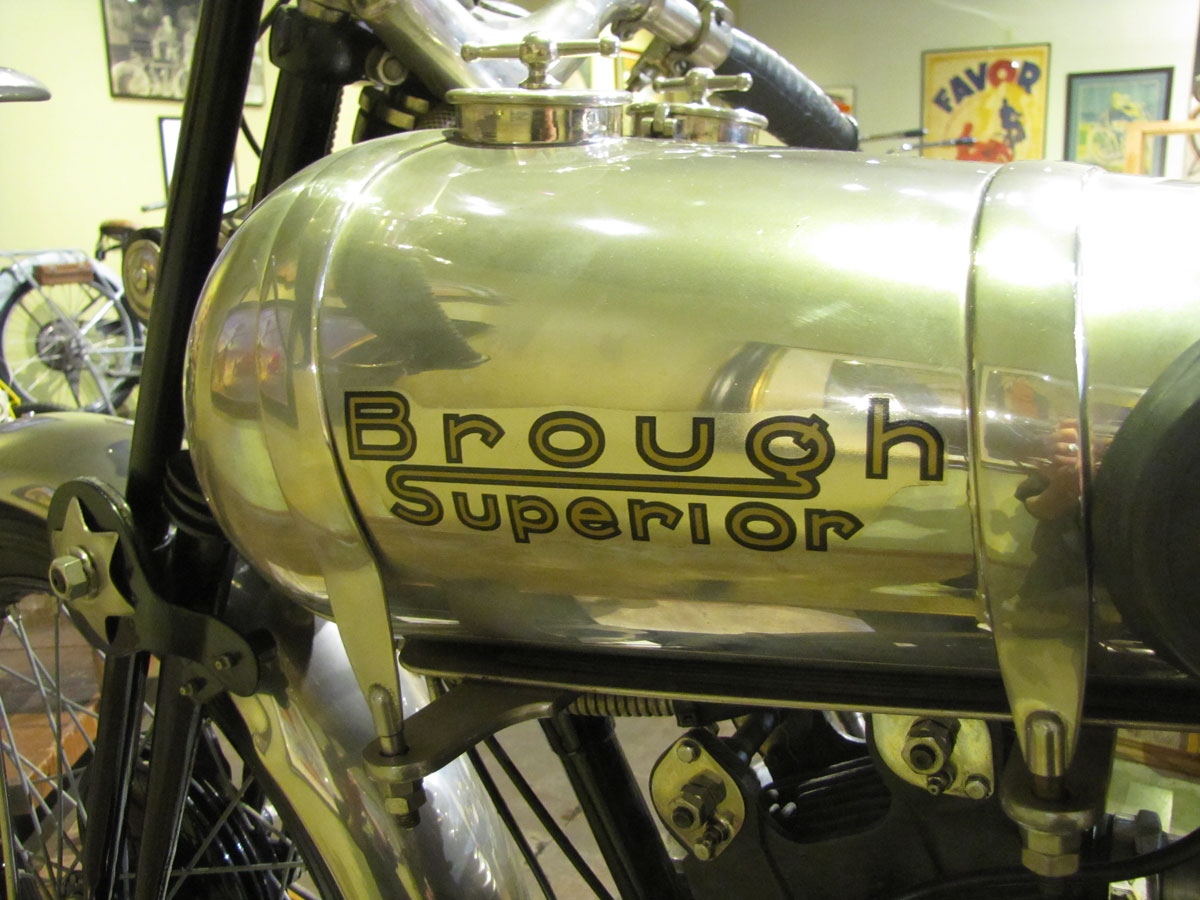
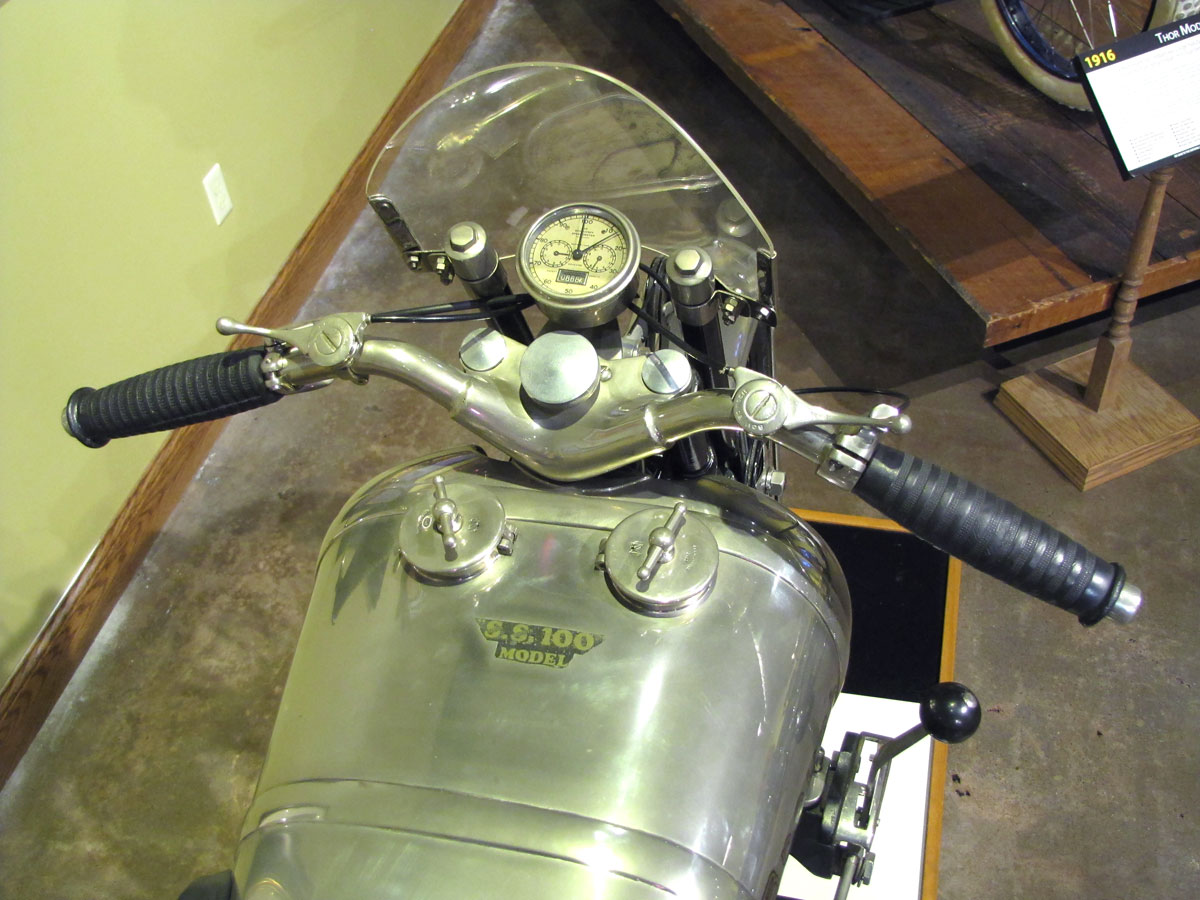
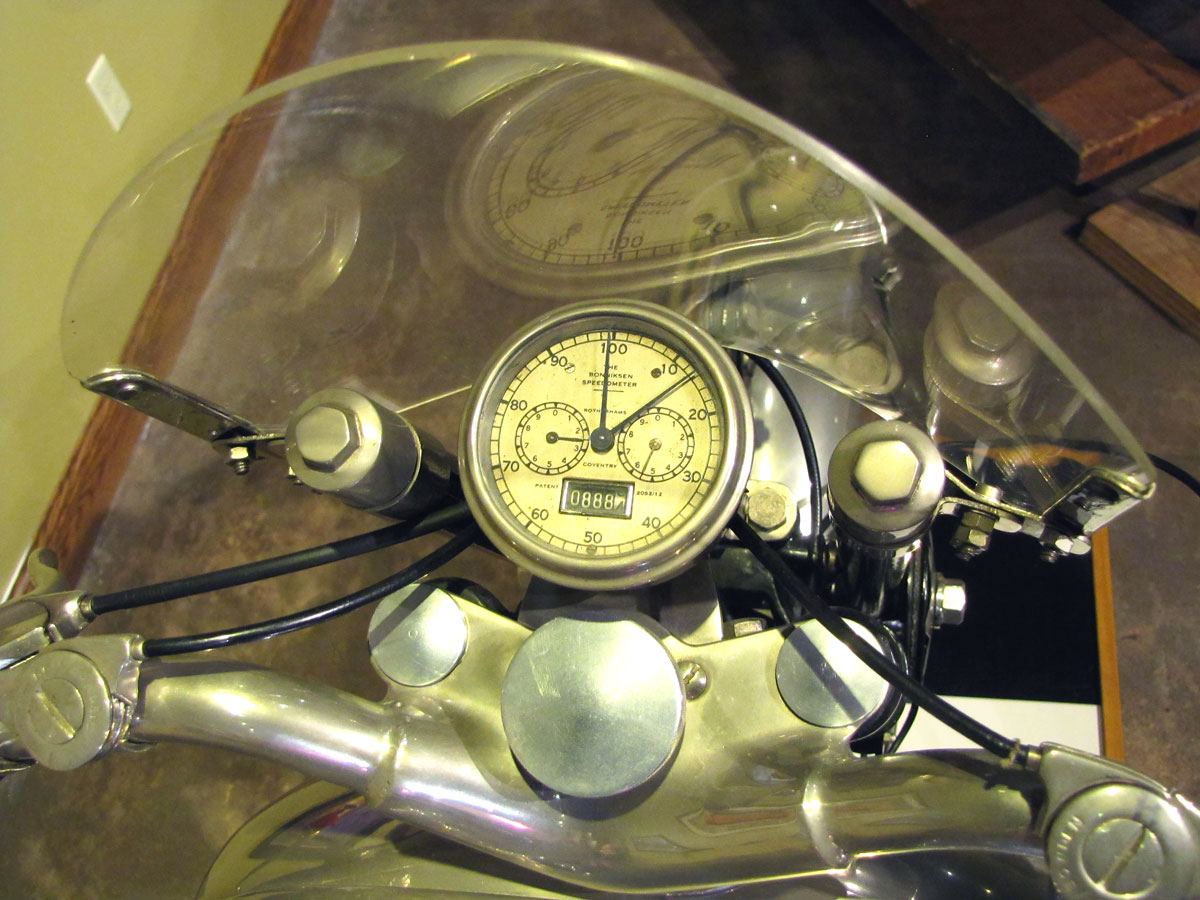
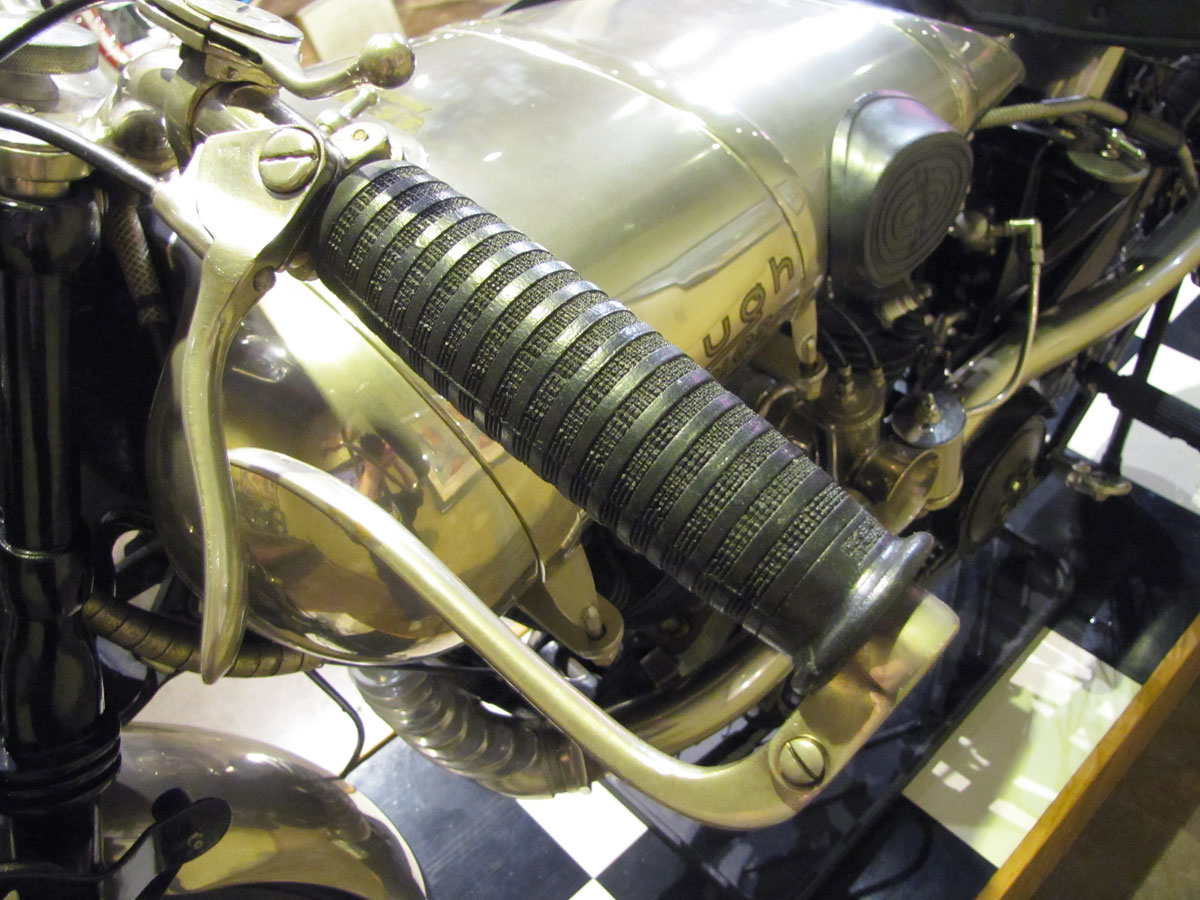
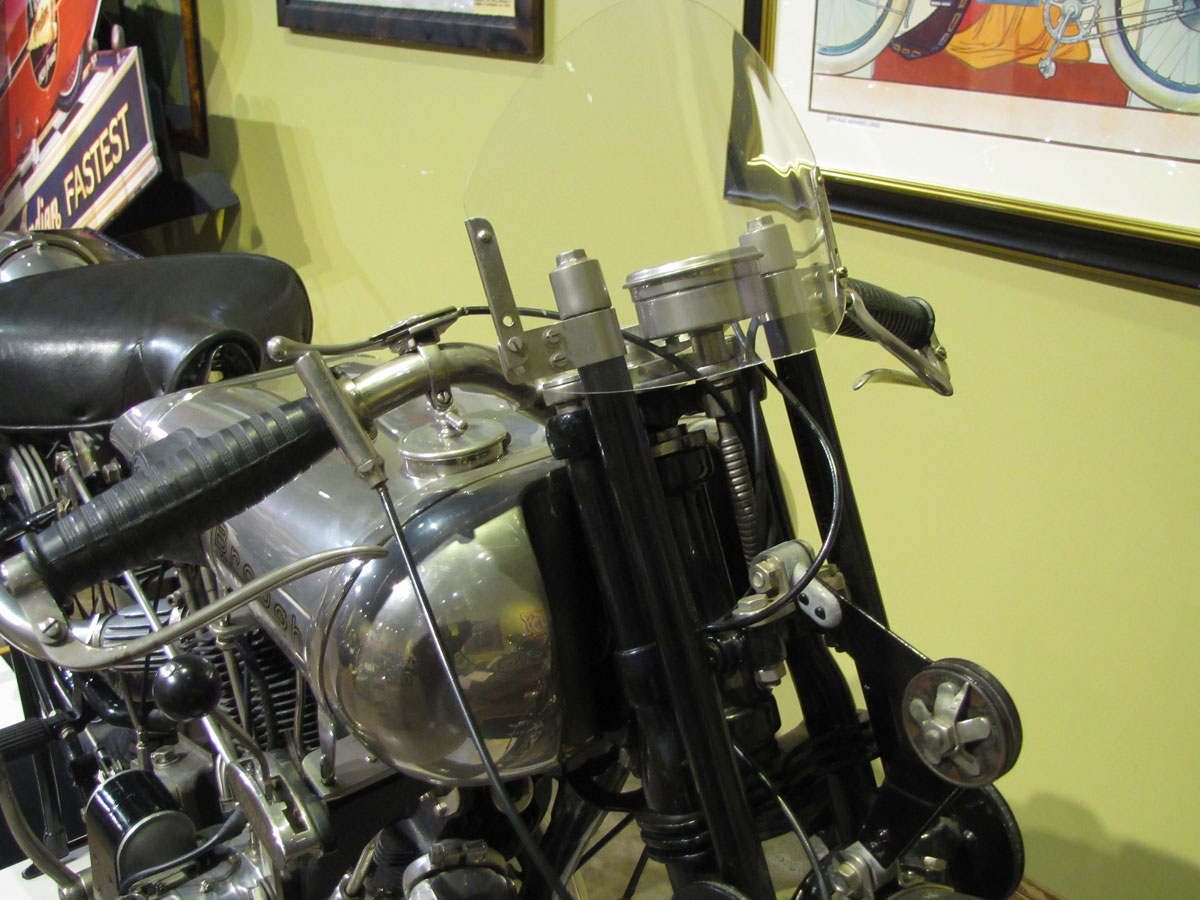
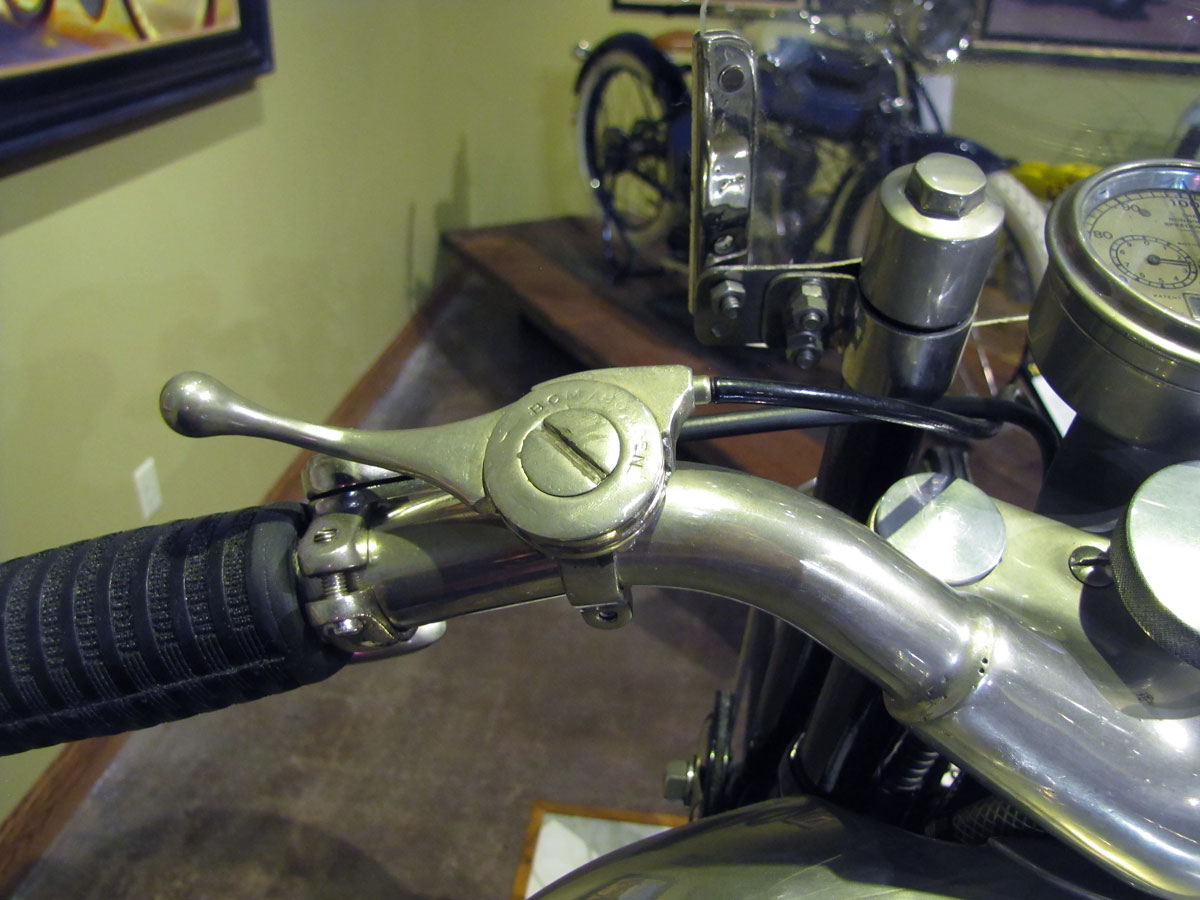
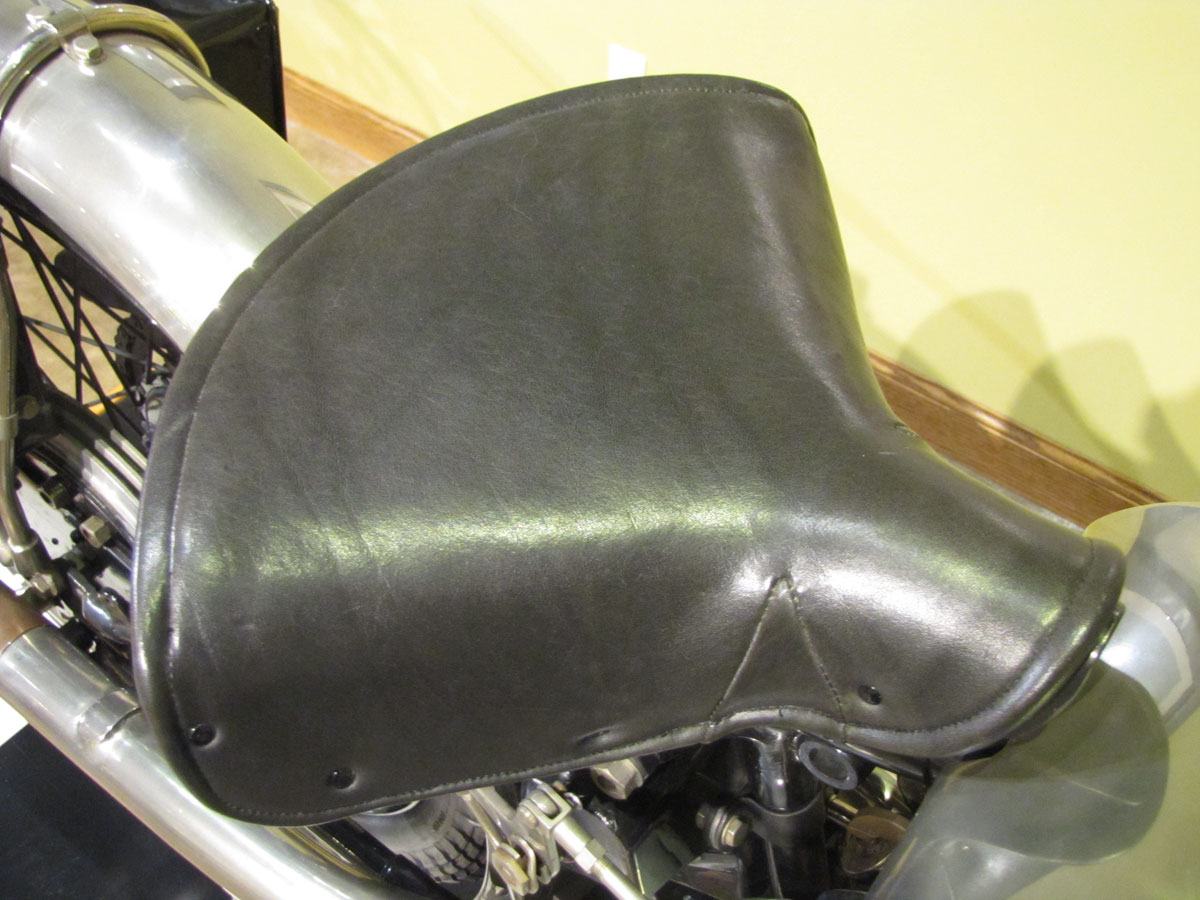
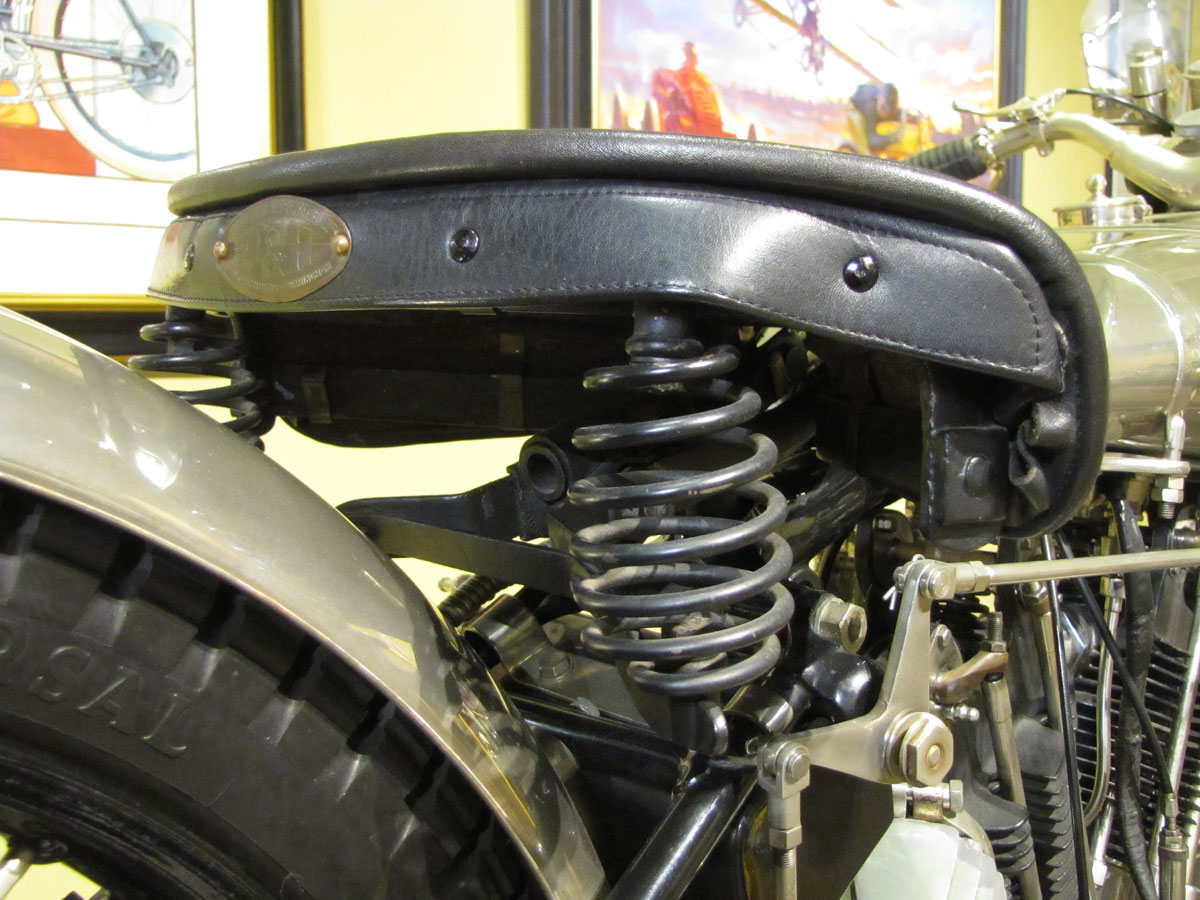
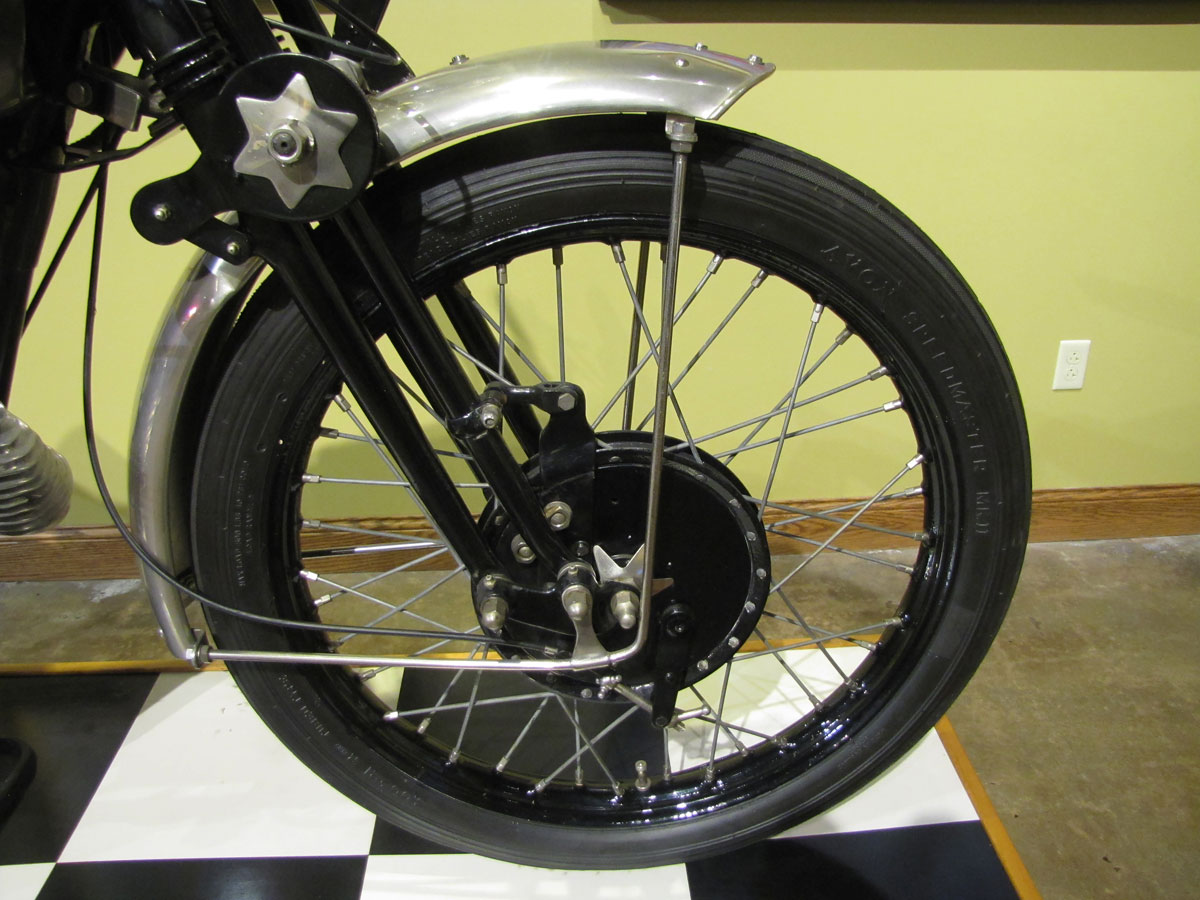
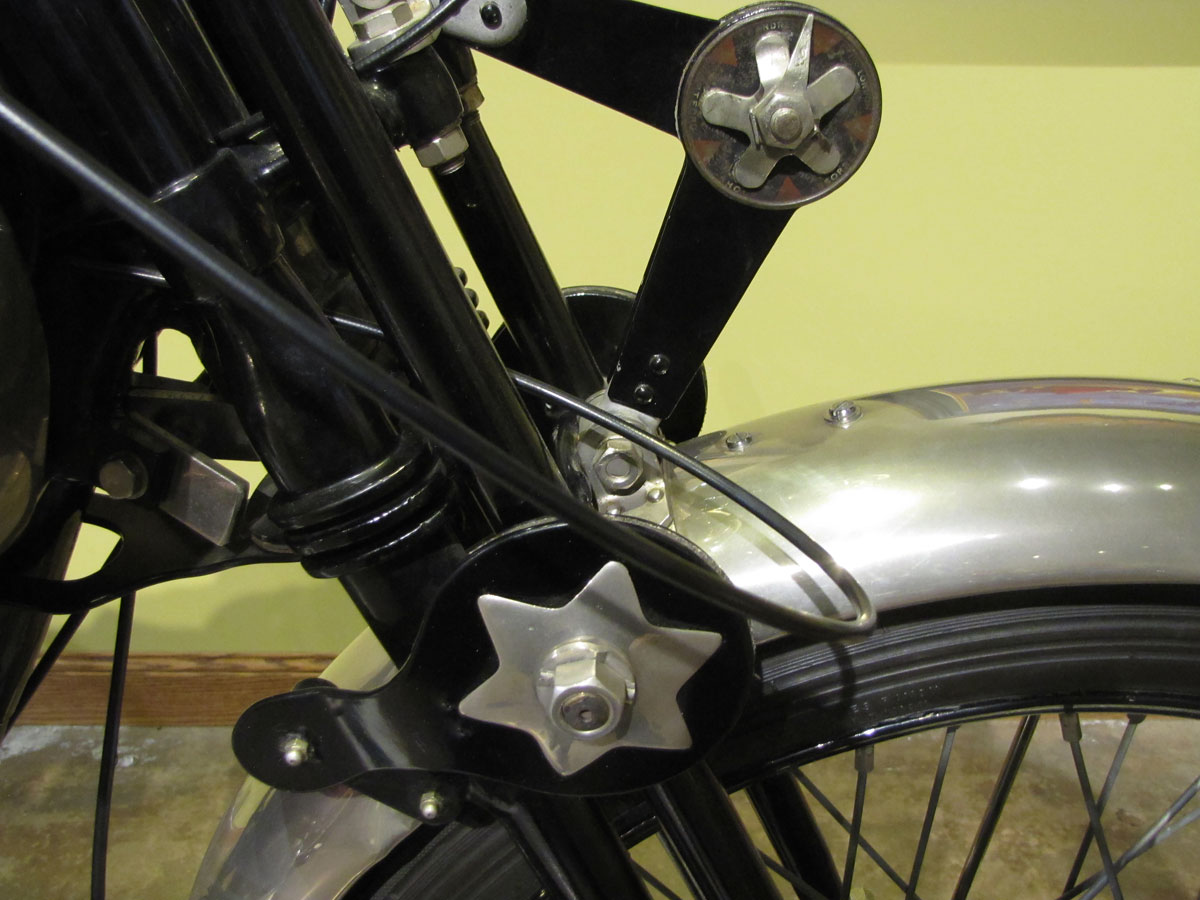
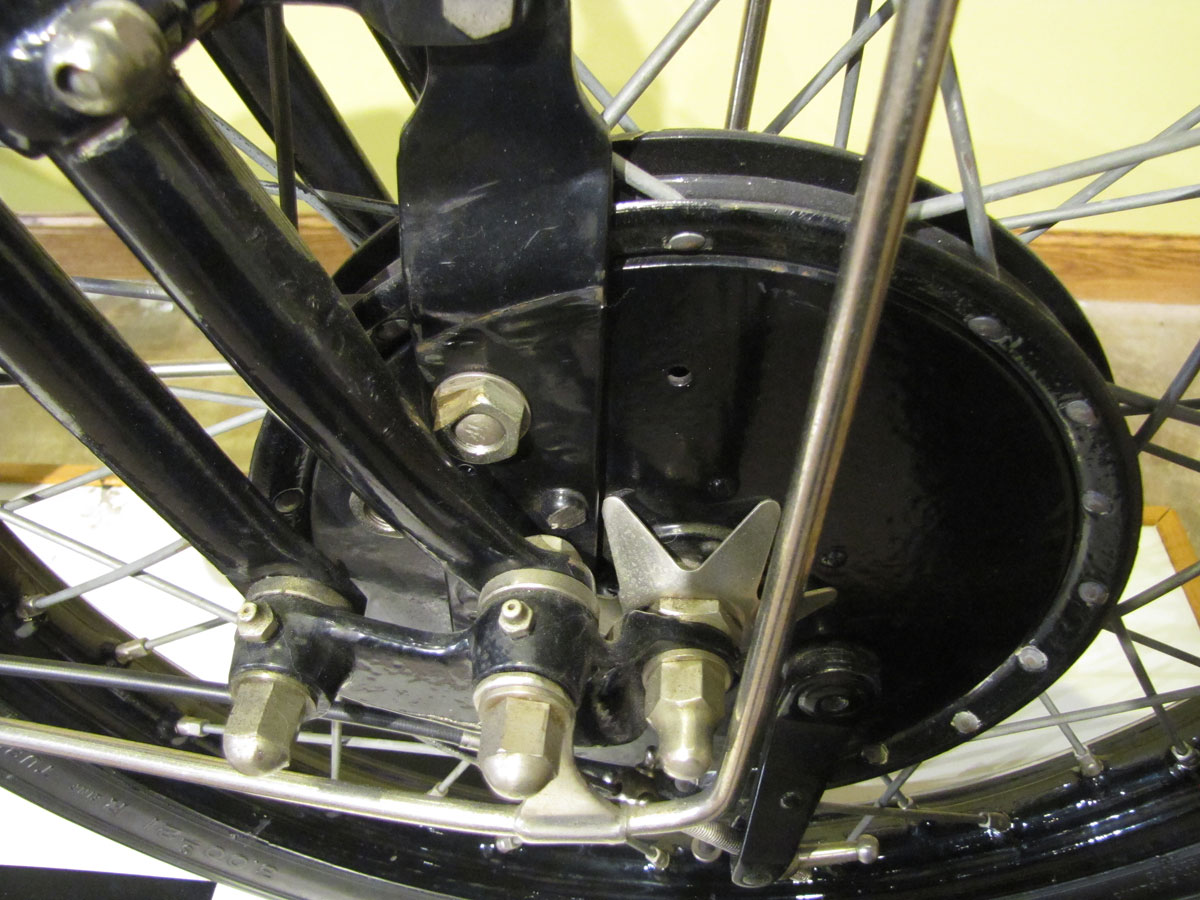
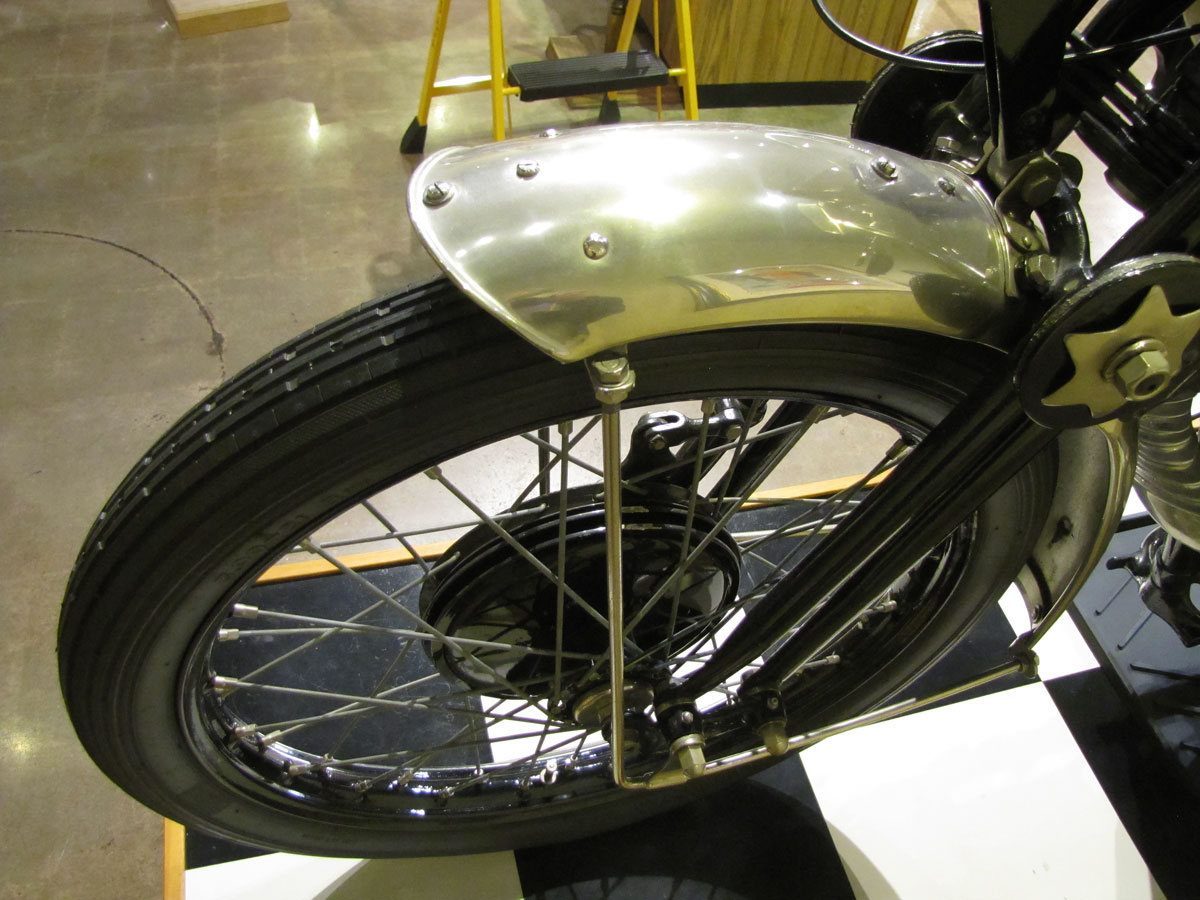
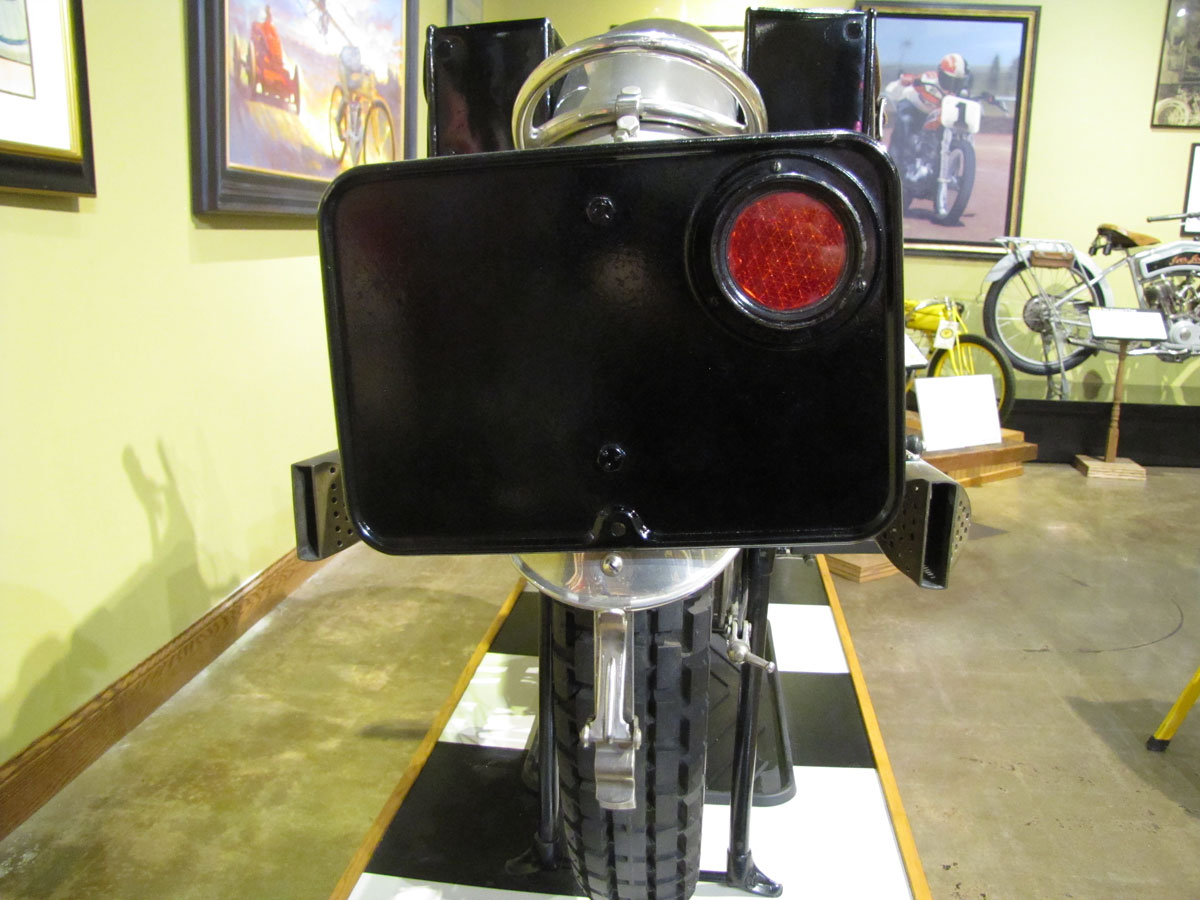
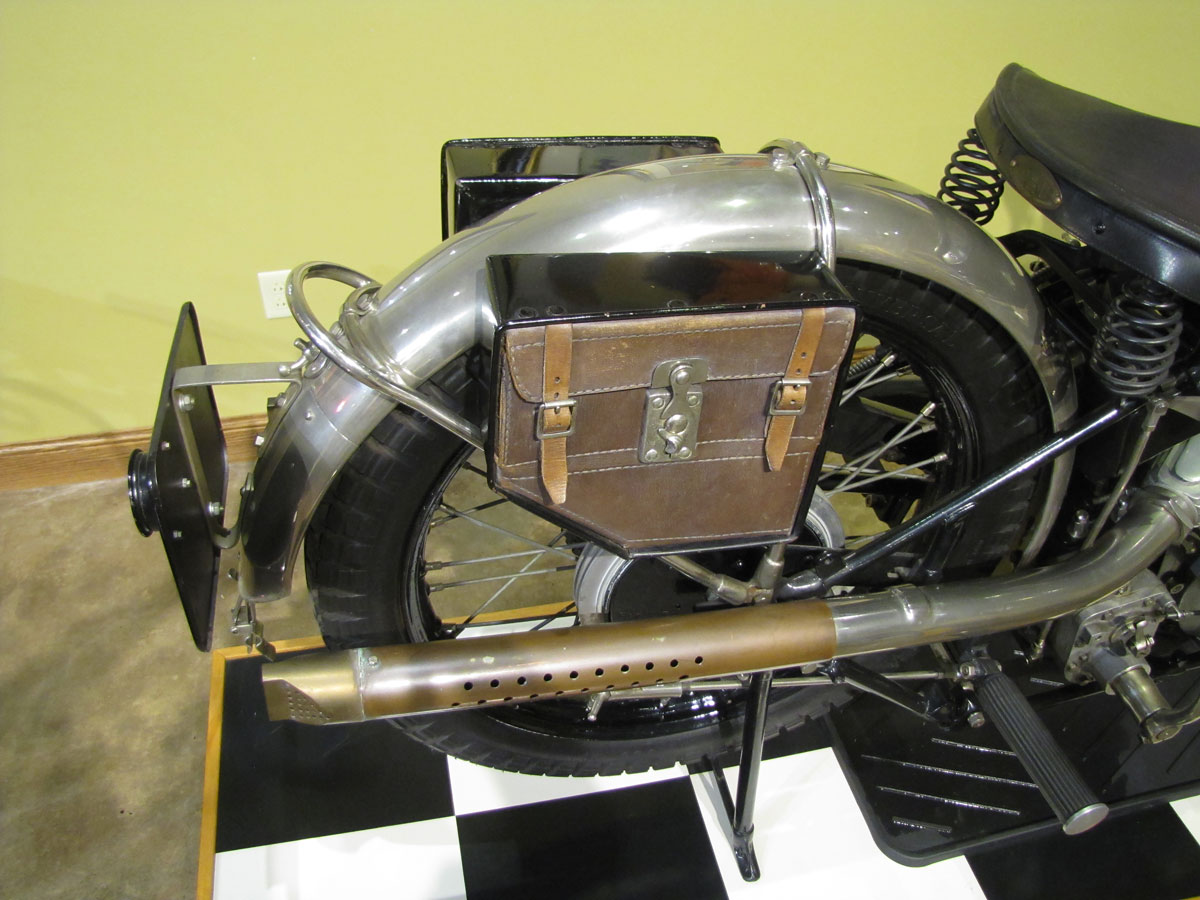
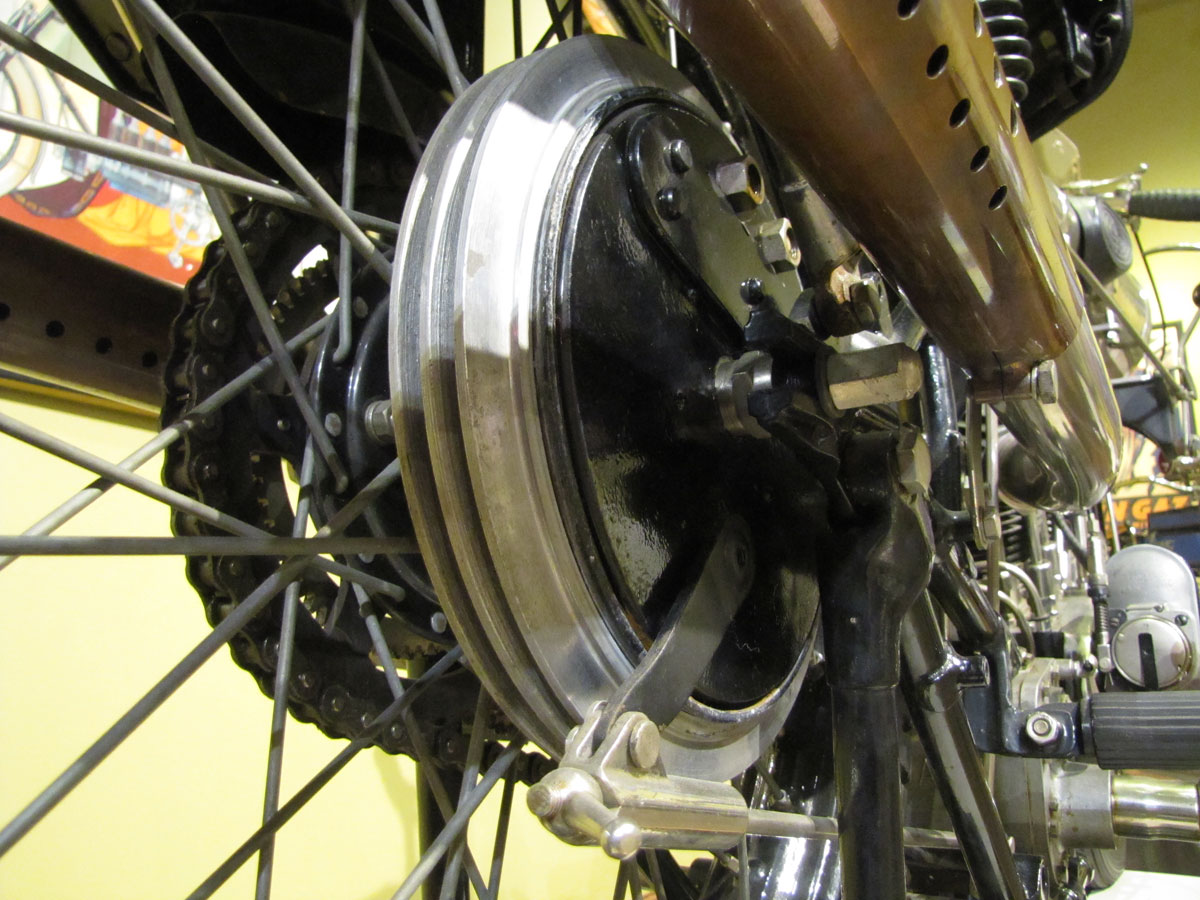
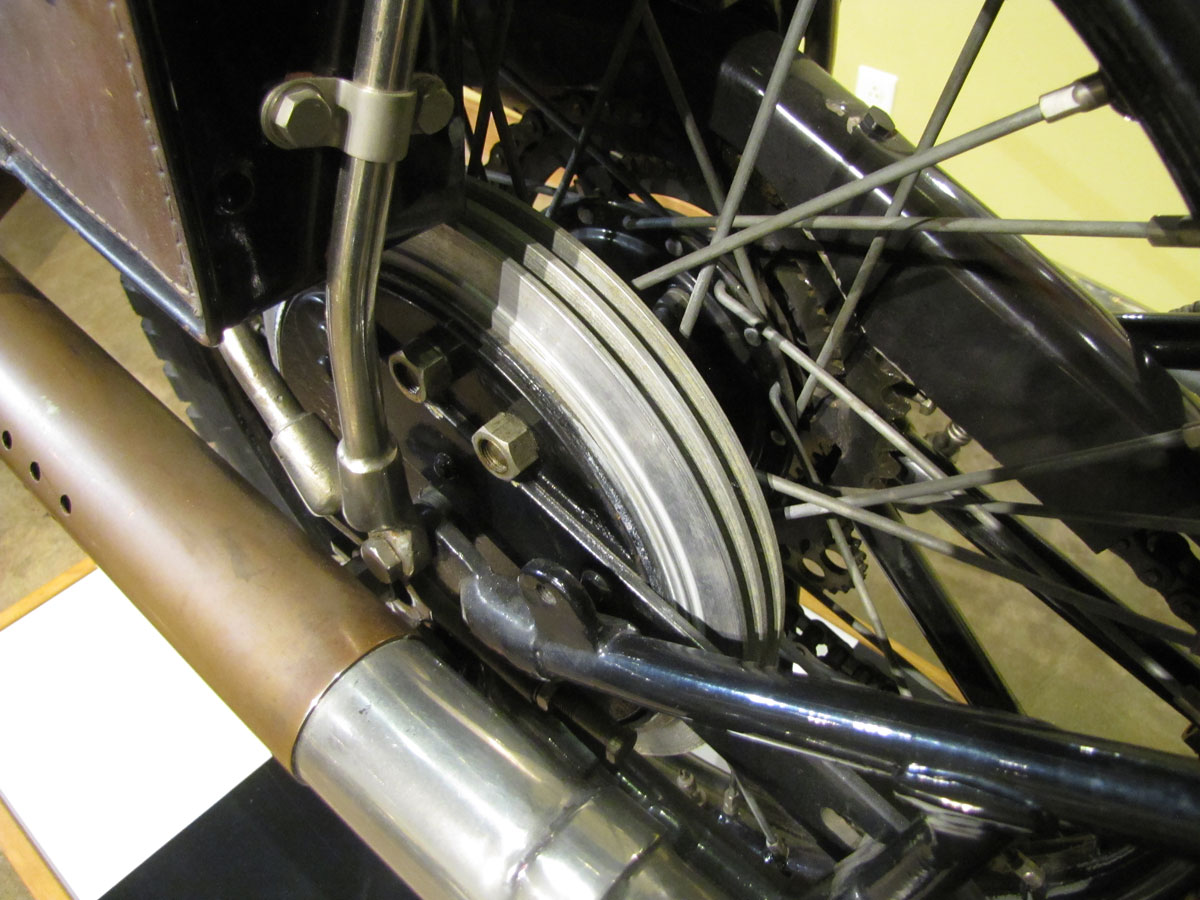
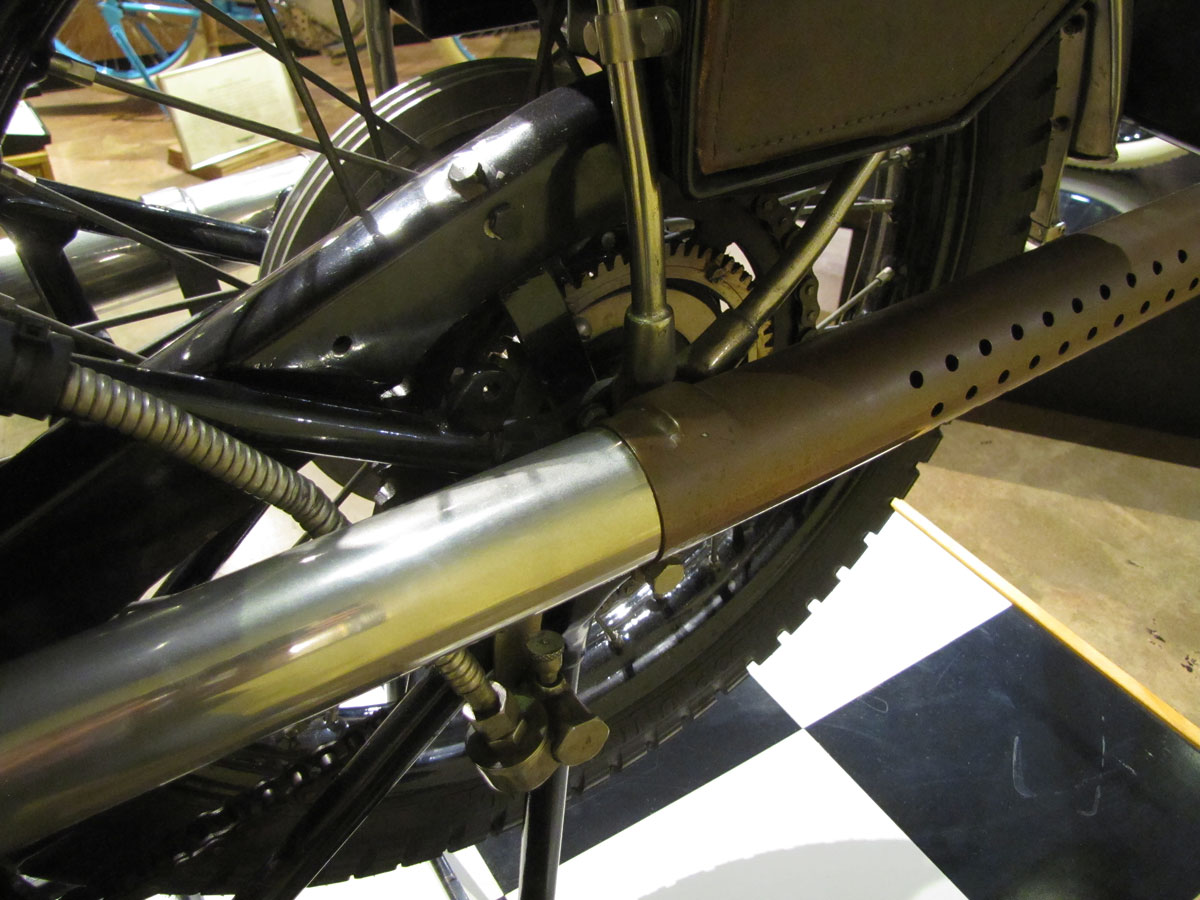
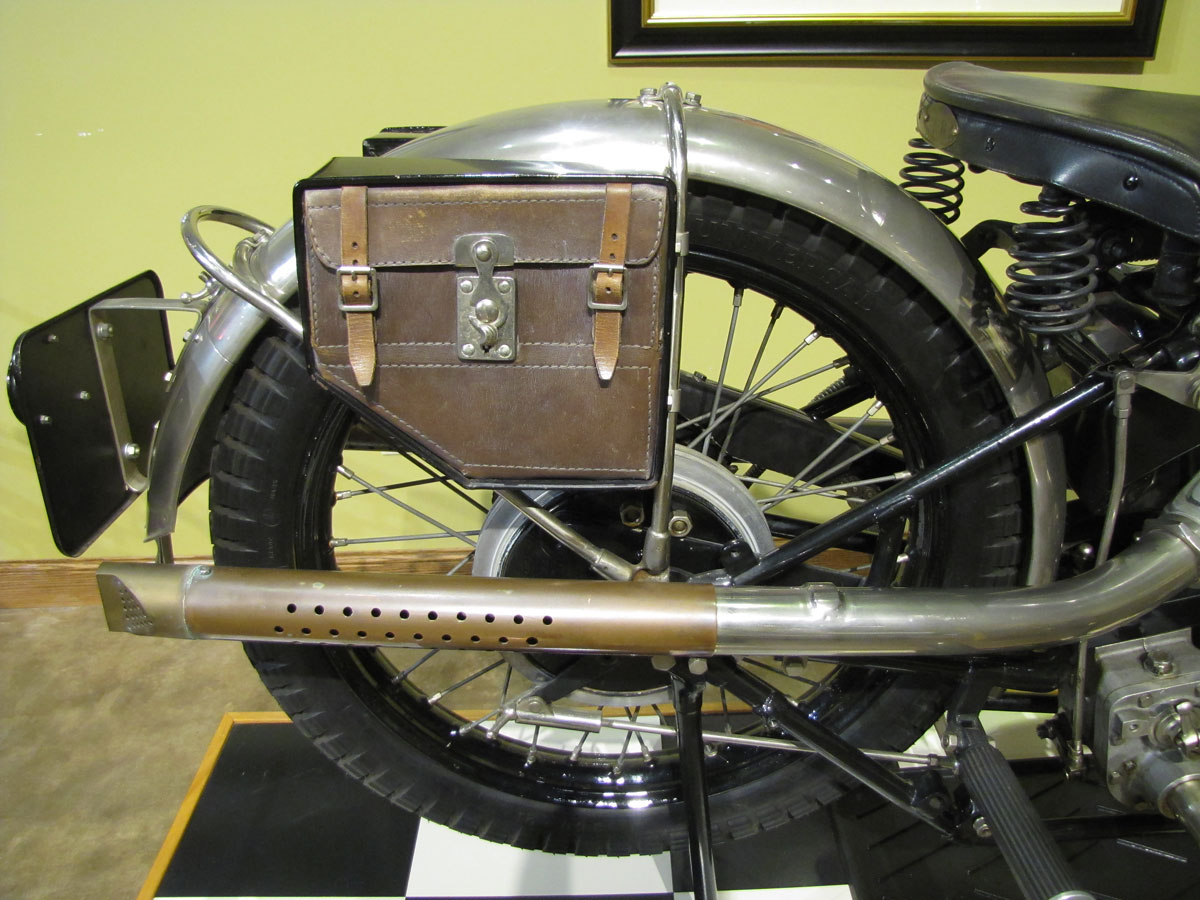
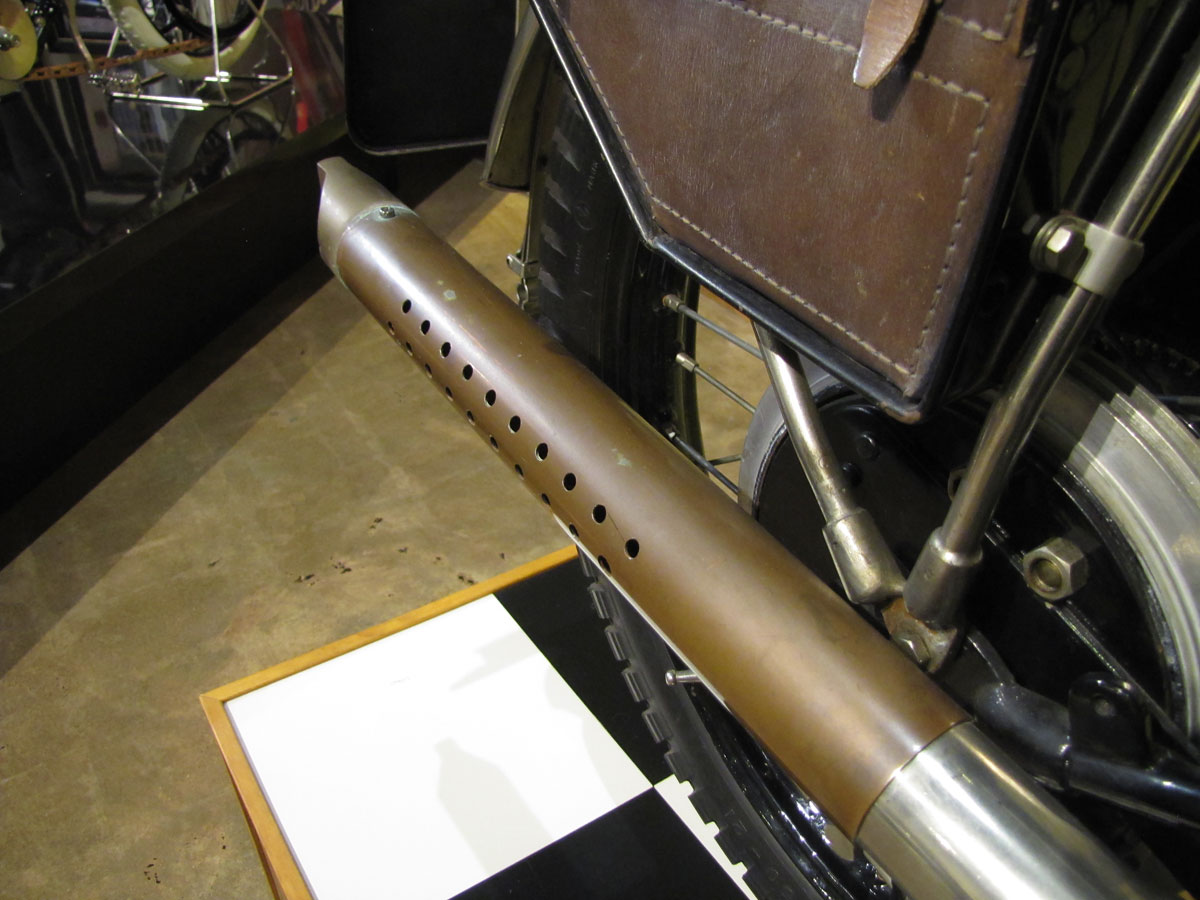
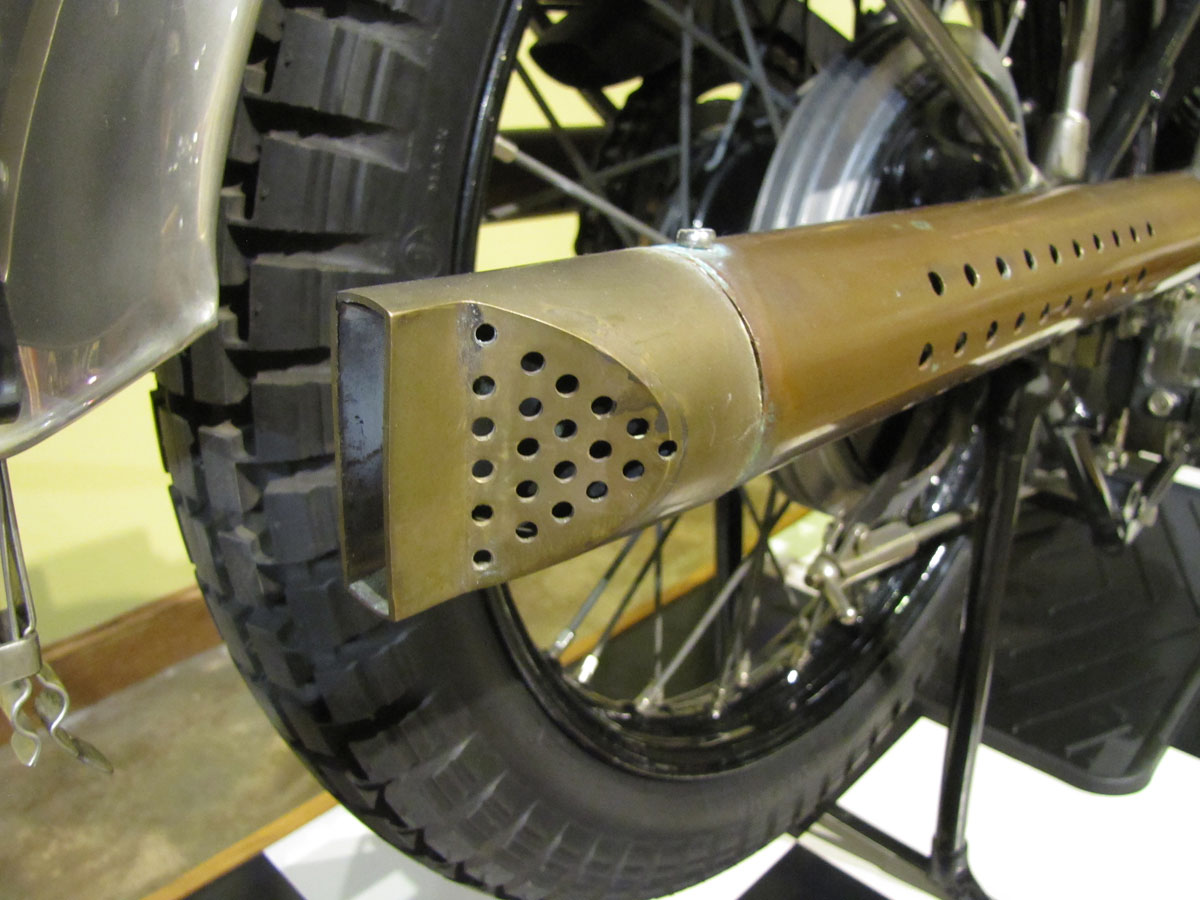
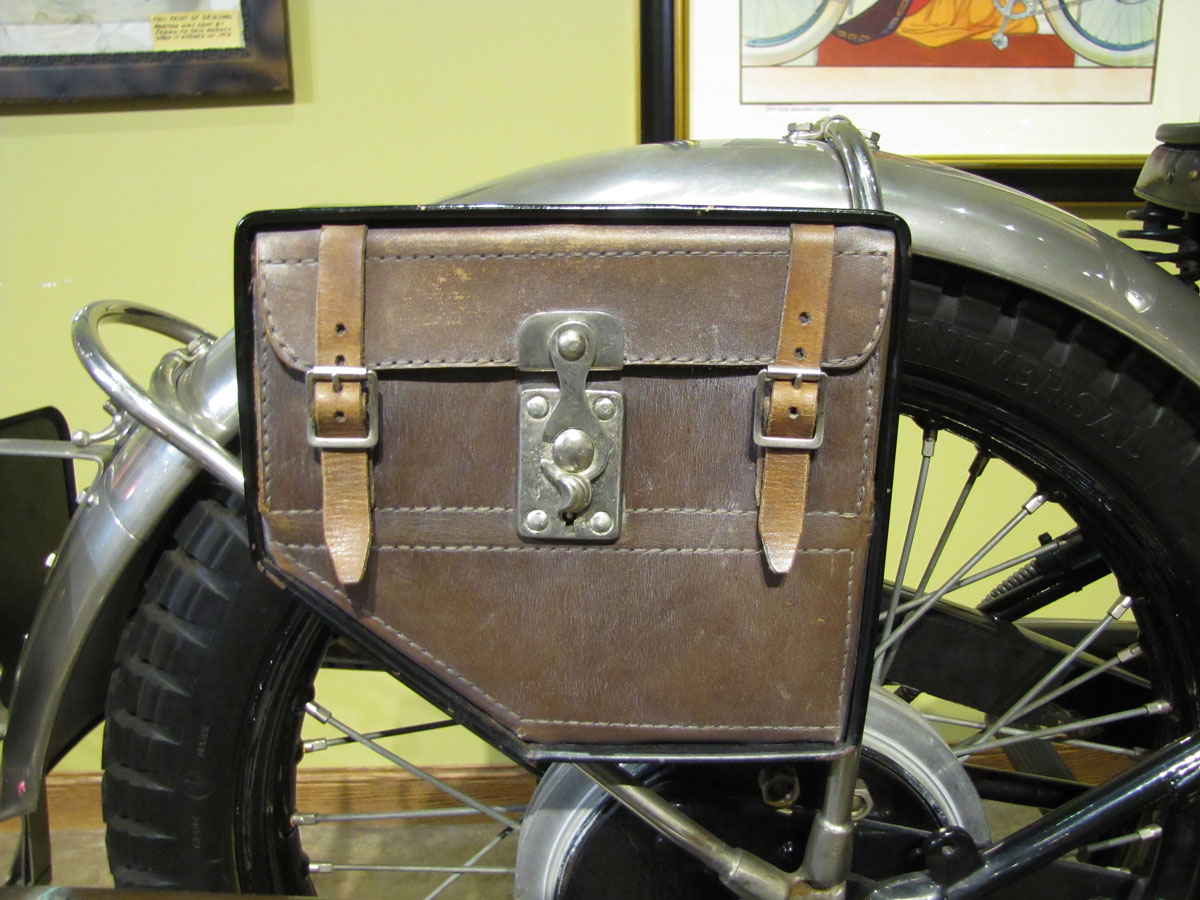
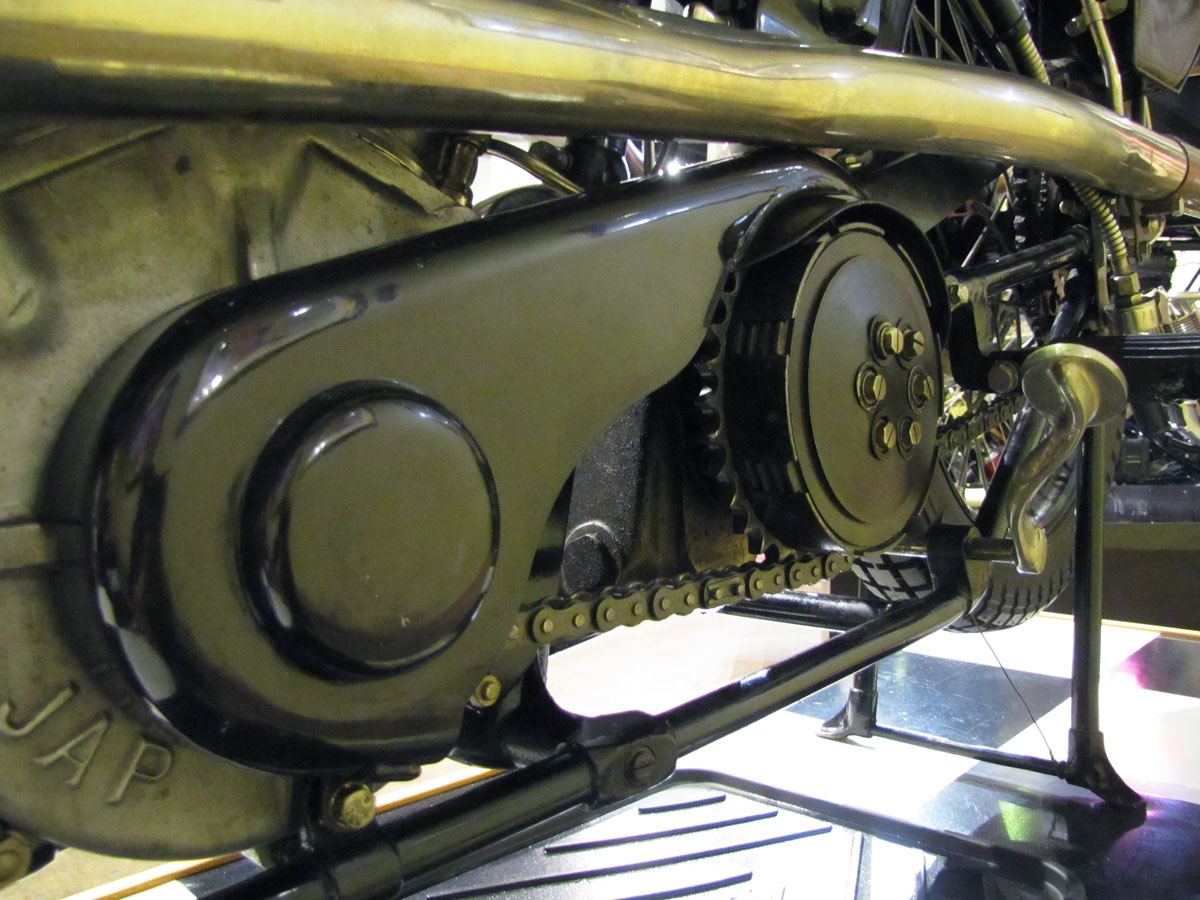
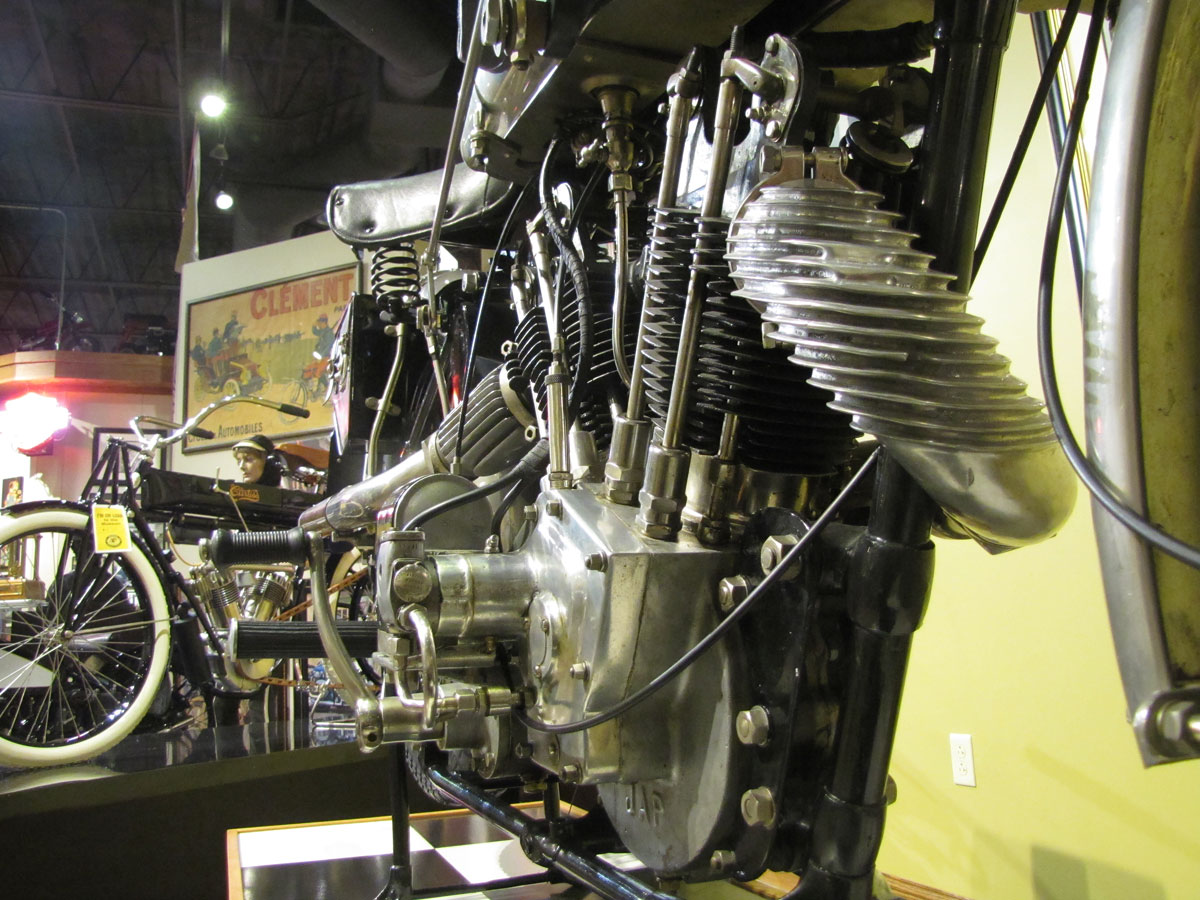
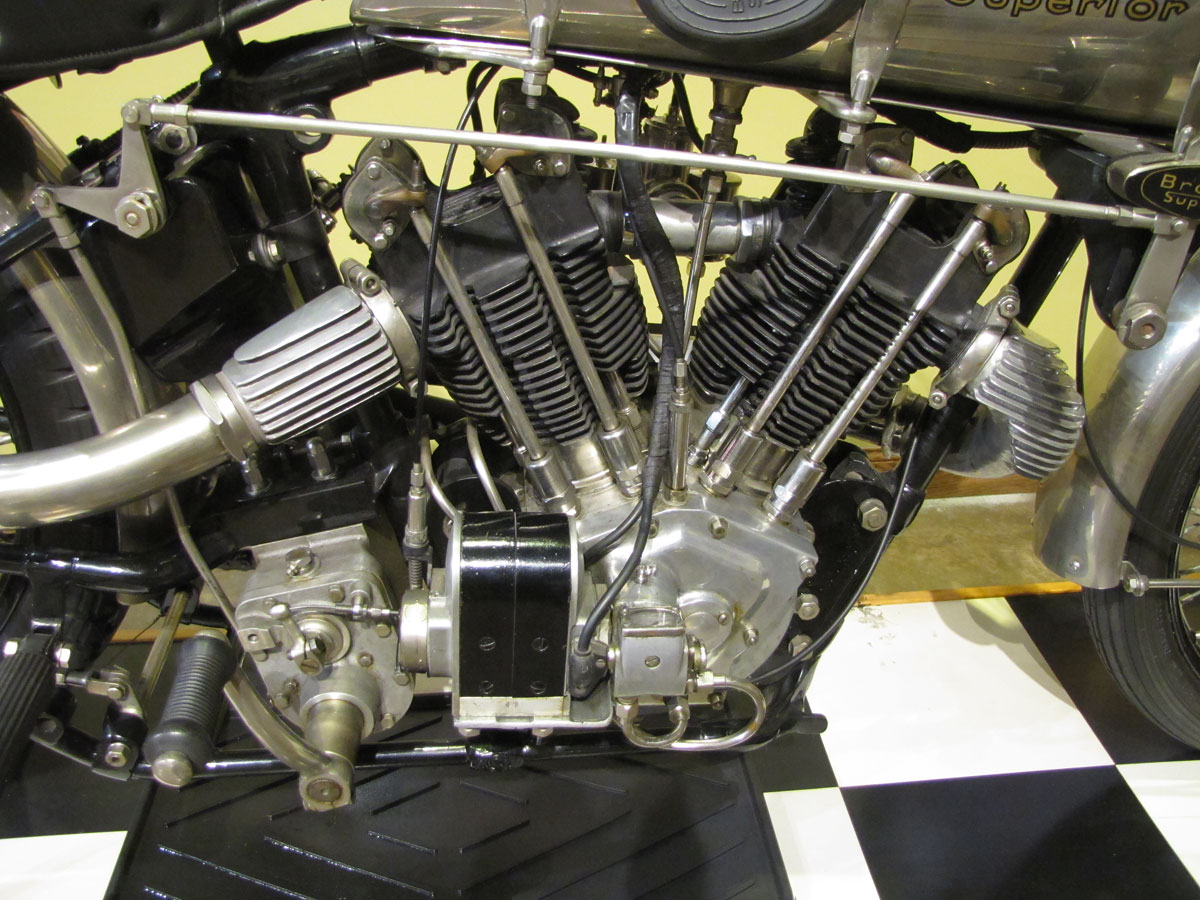
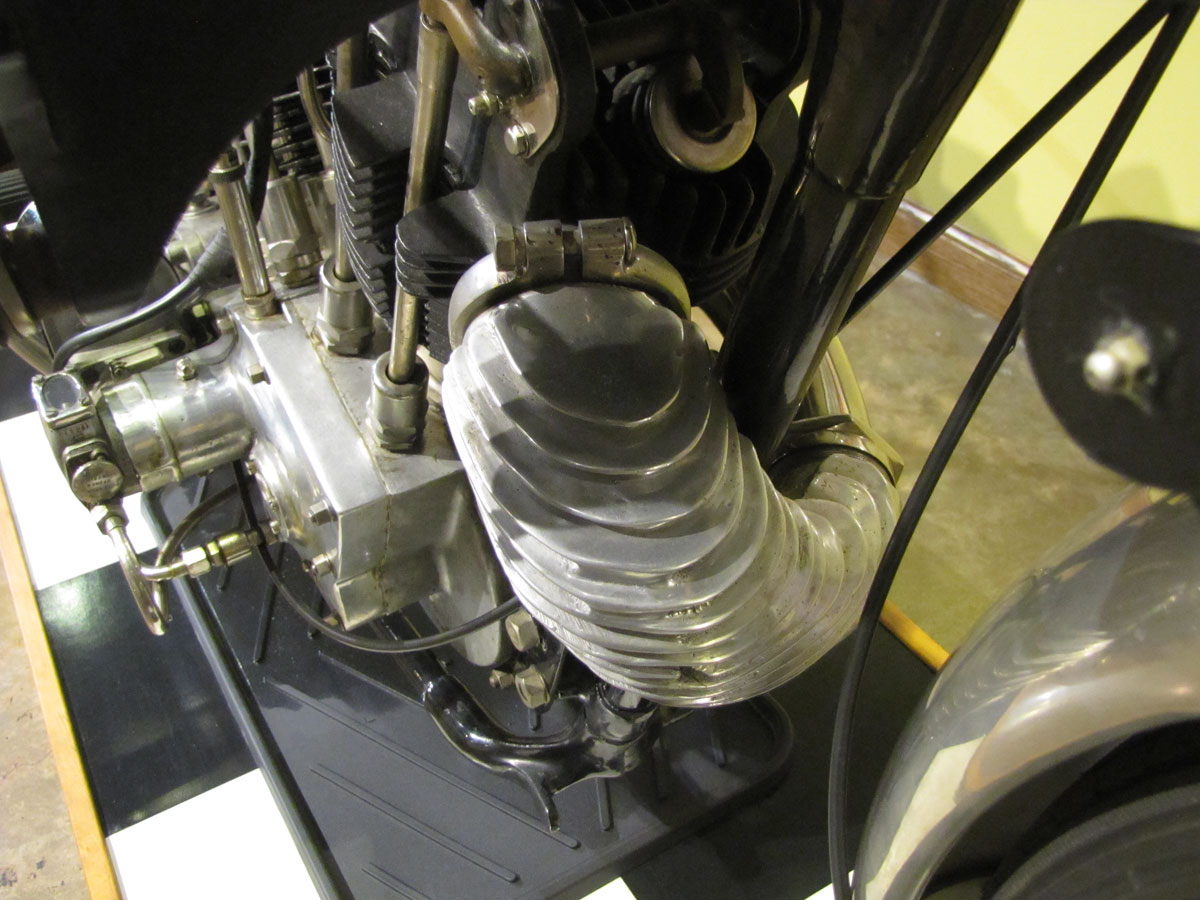
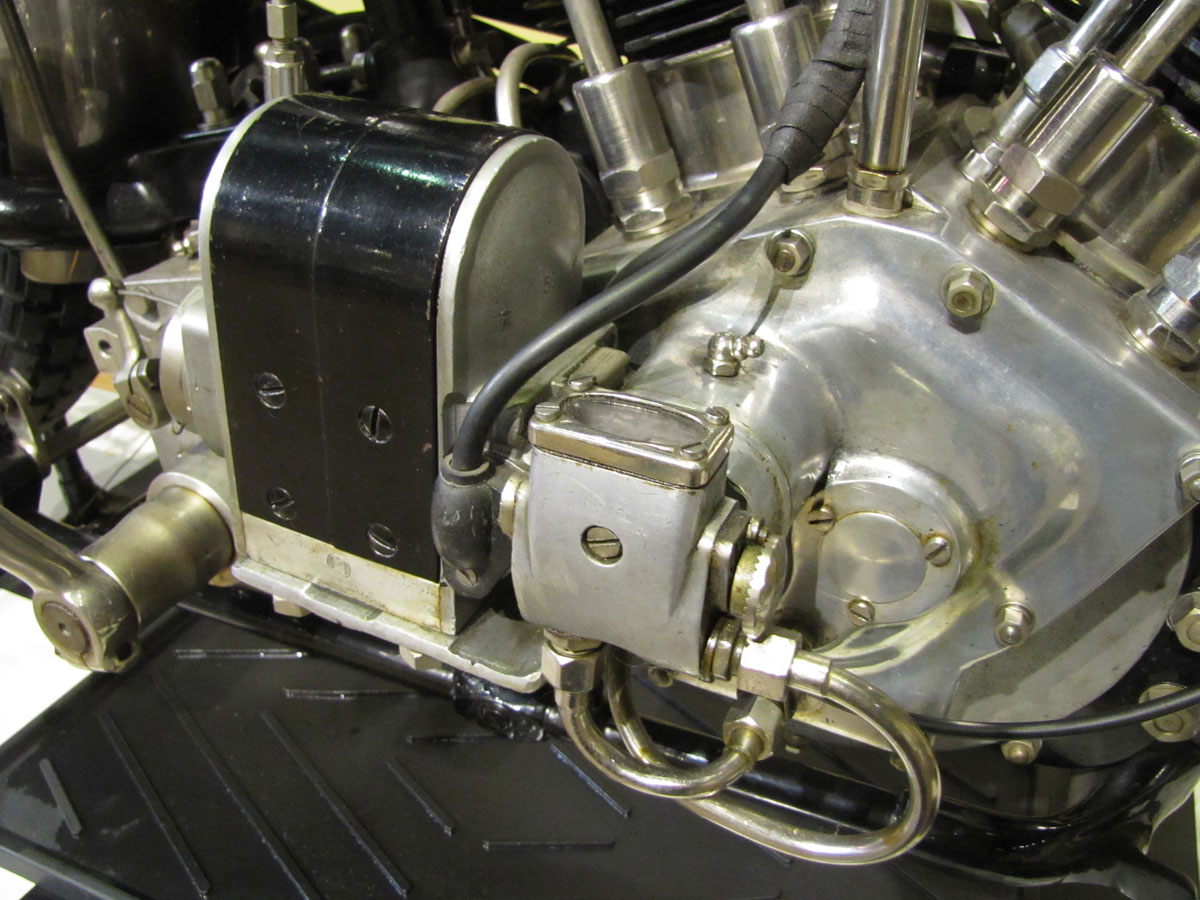
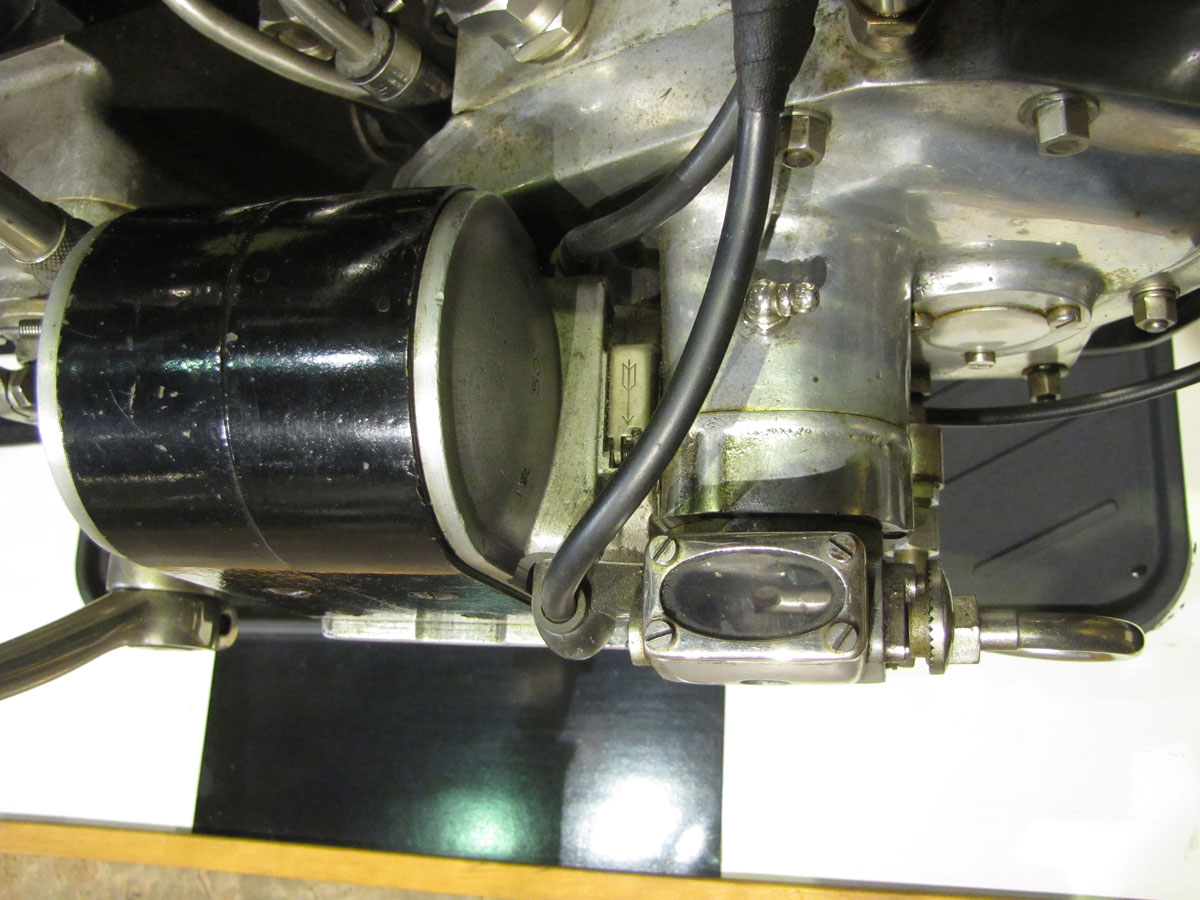
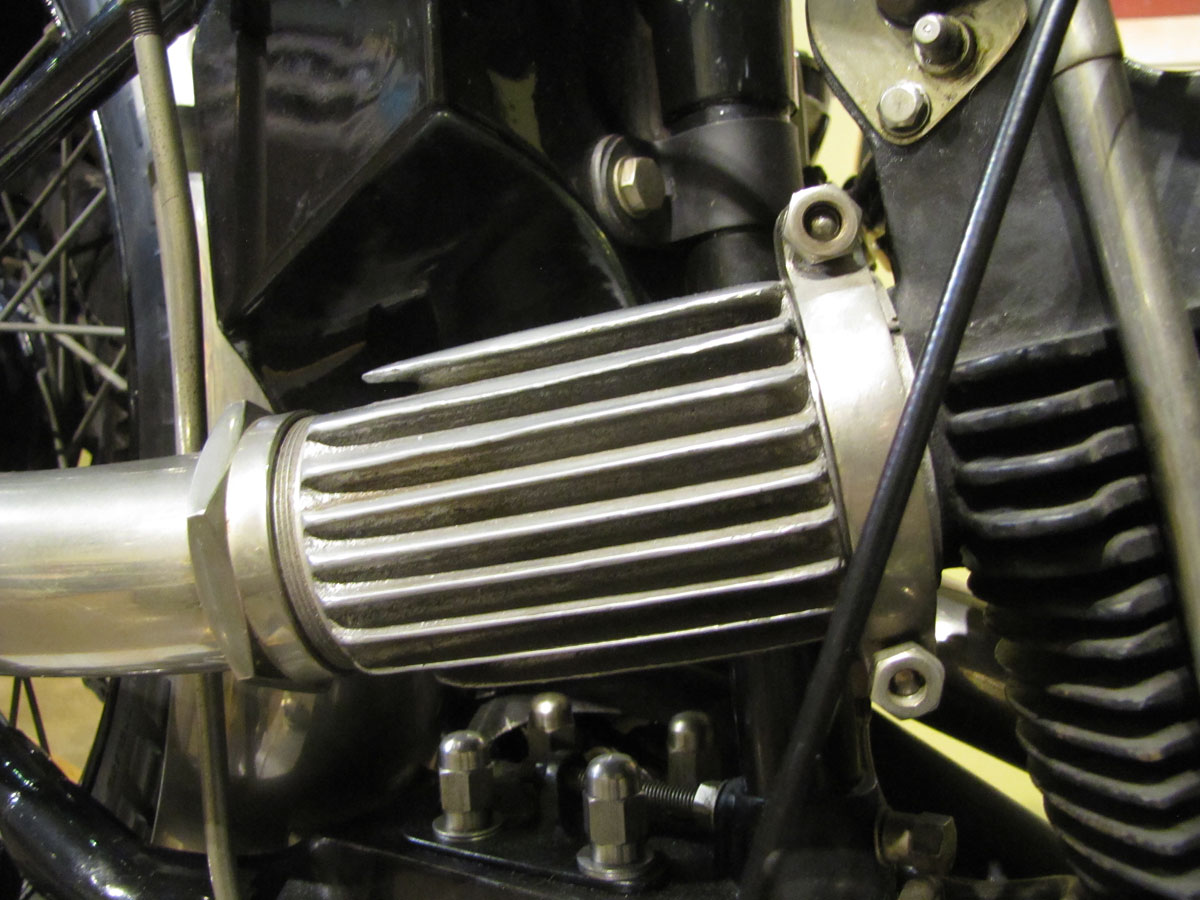
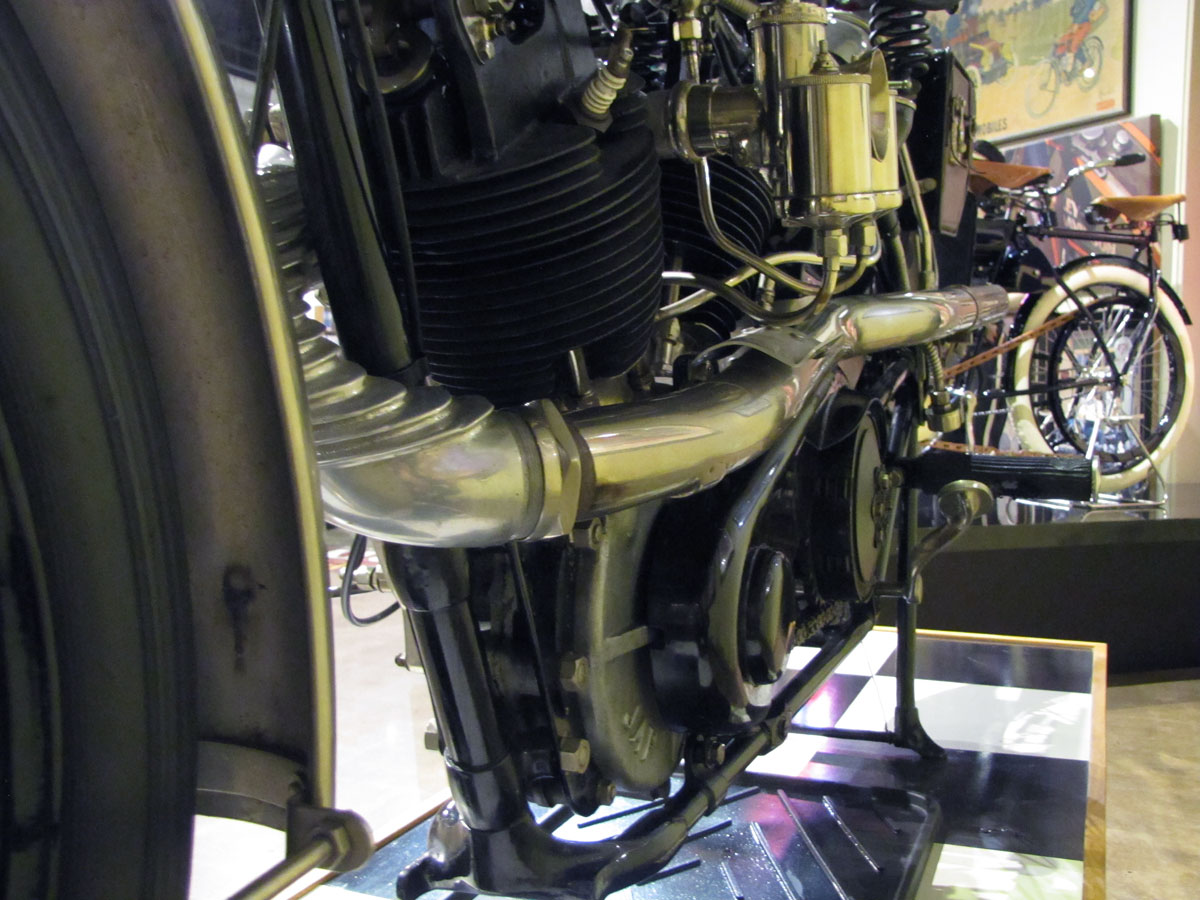
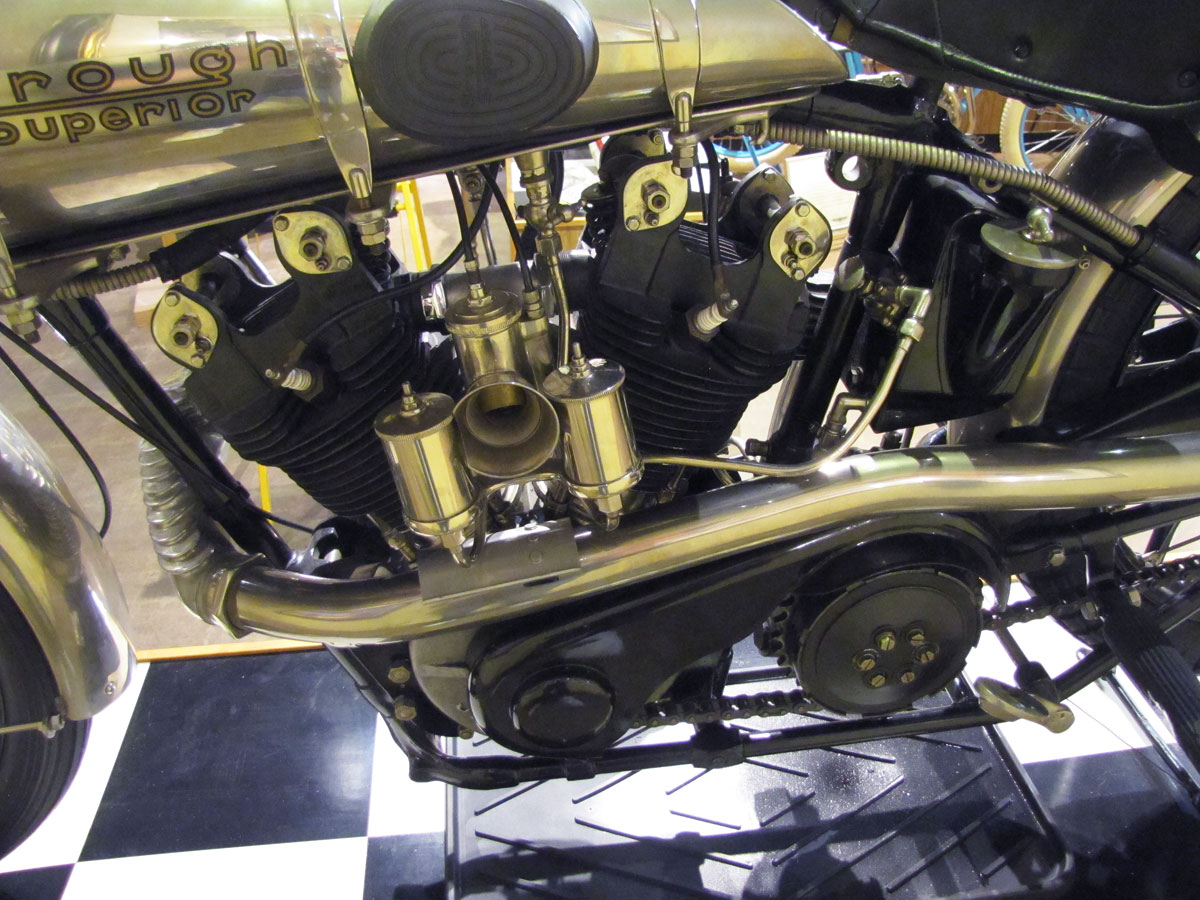
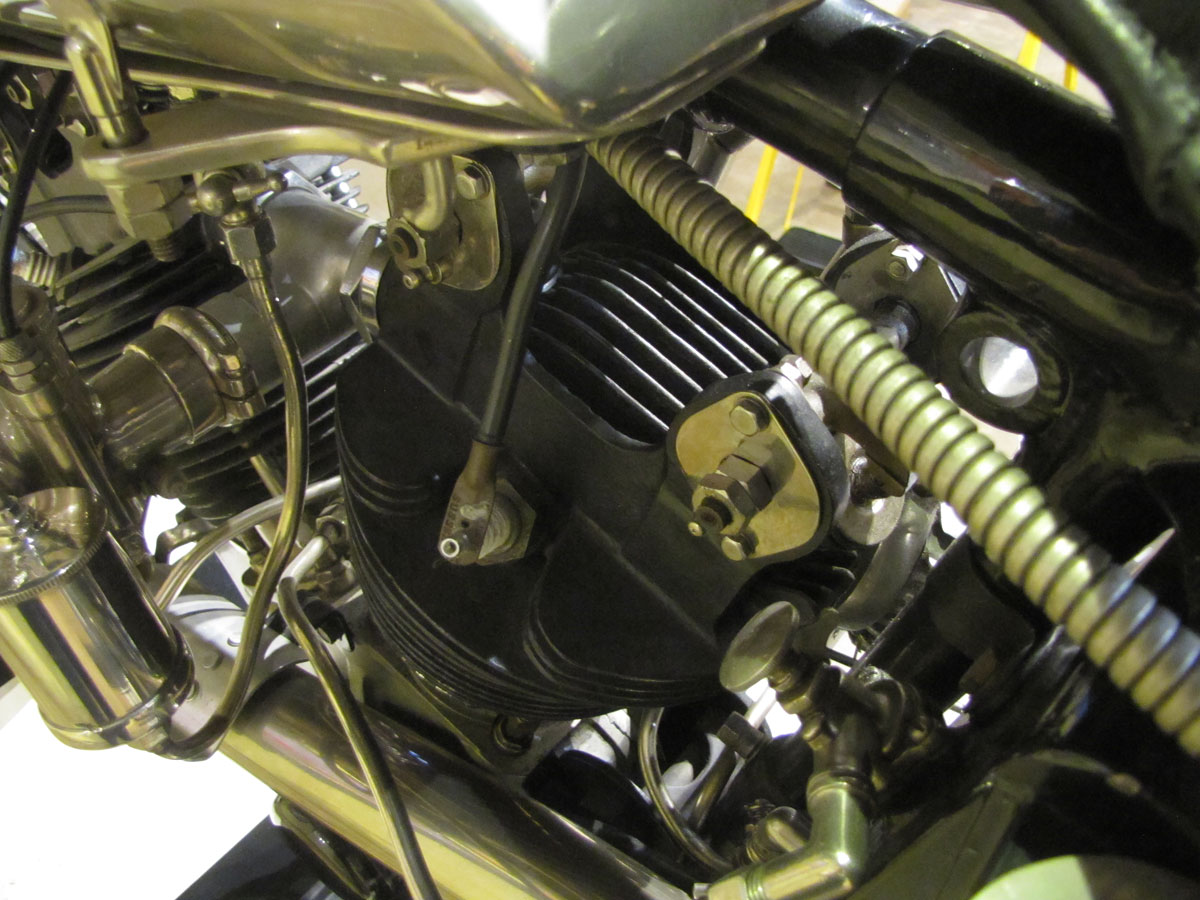
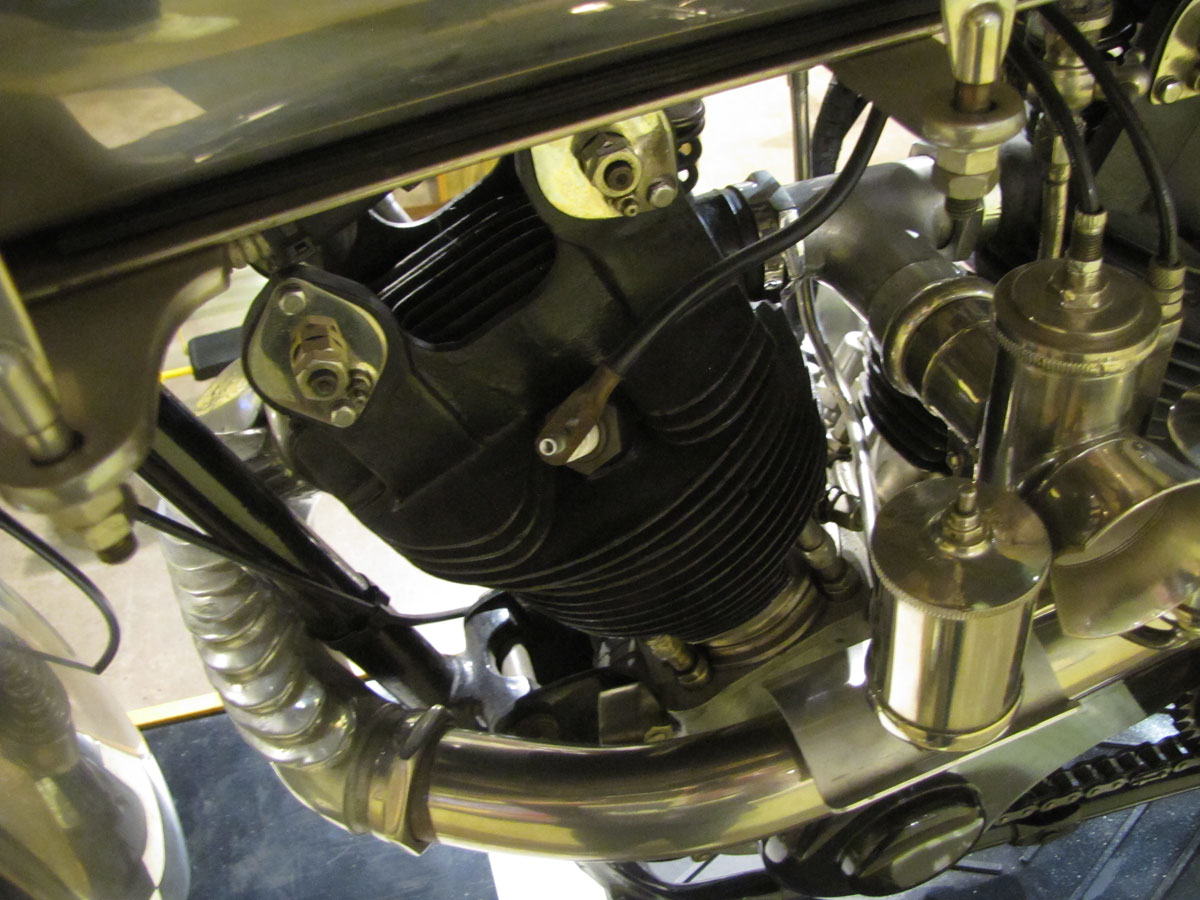
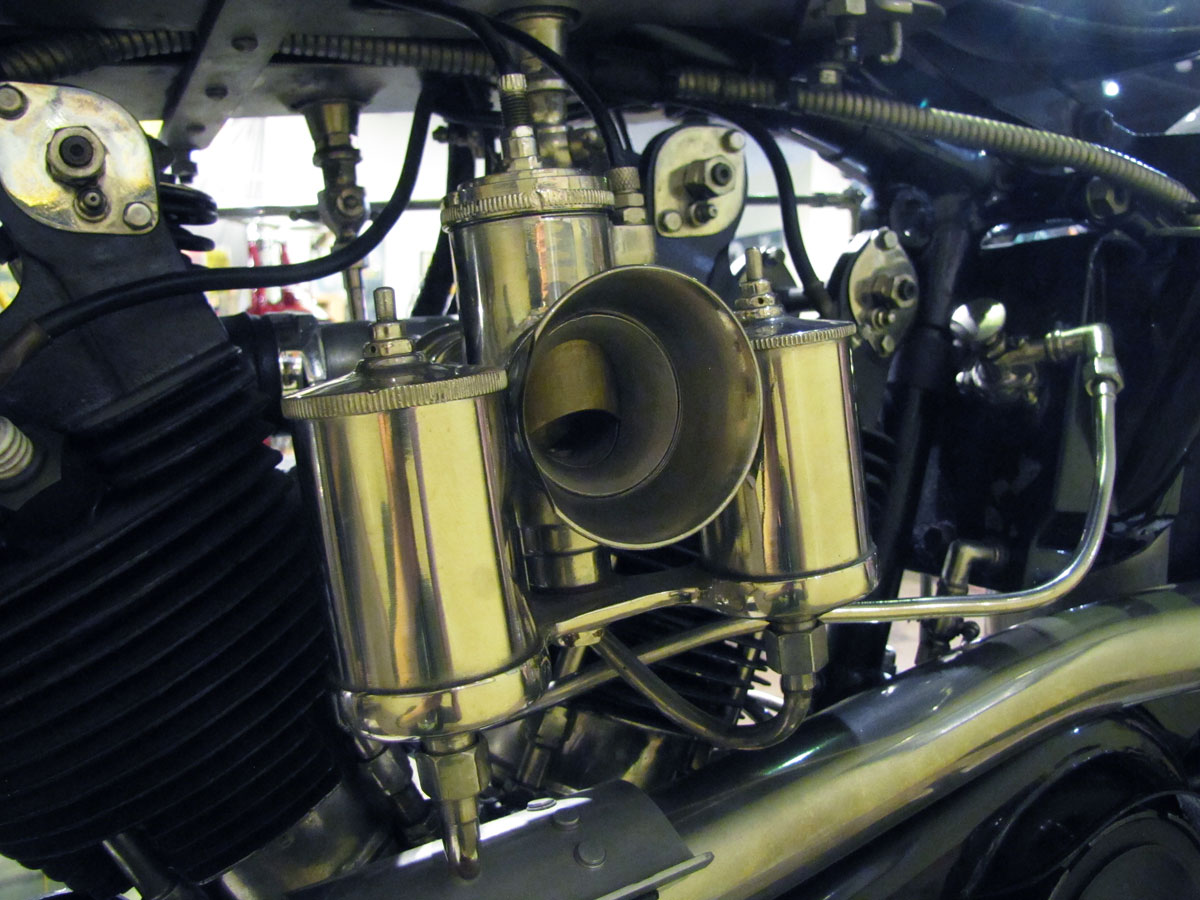
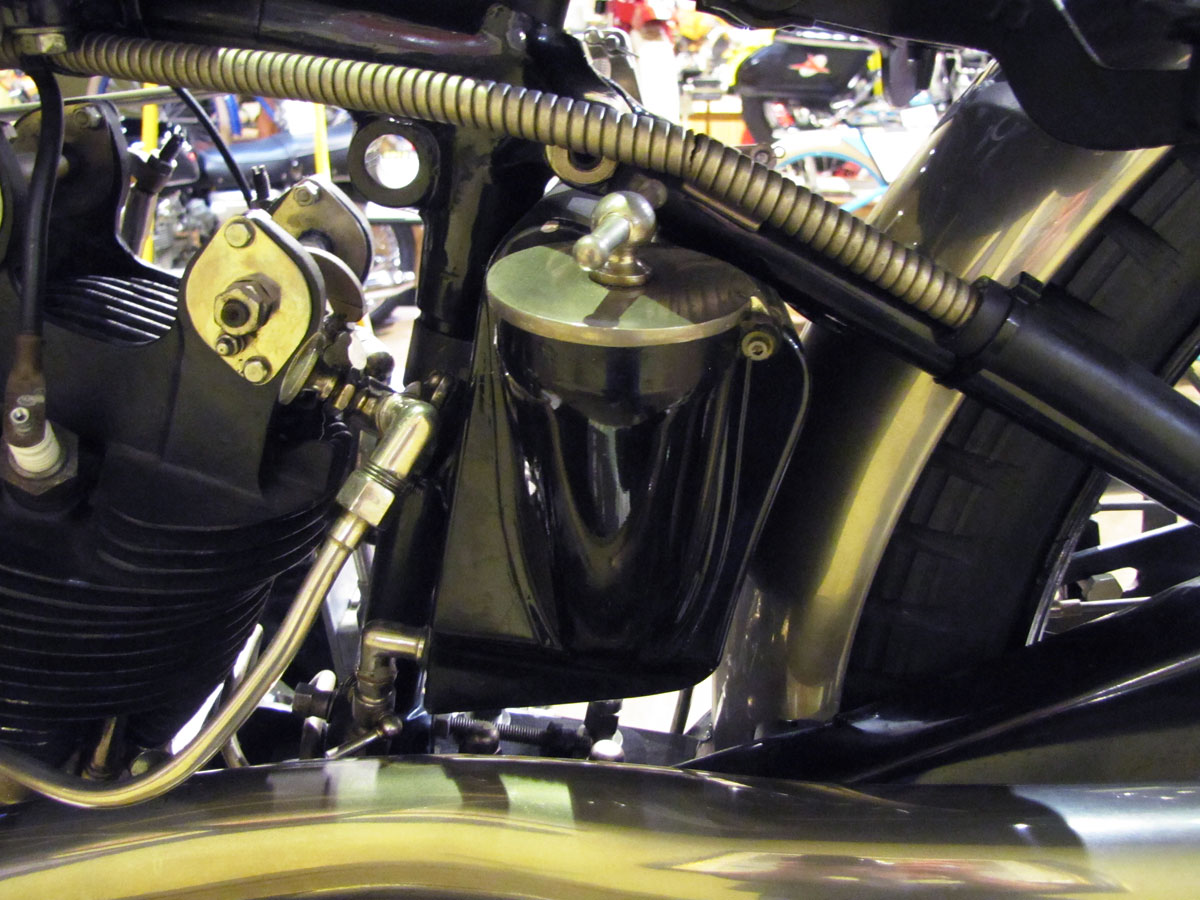


C’mon. Move the “Bike of the “Bike of the Week” sign. It’s still by the Merkell.
Such a Beautiful Machine. So Sad that the Museum is closing. It is a National Treasure. Sadly I won’t be able to Make it there before it closes. But thank you for all your time and effort and expense over the years for having this Amazing Museum open to the public.
What is the reason for the closing of the museum? Couldn’t Mike Wolfe from American Pickers be brought in to save it as he is a very keen motorcyclist, and also an Iowan as far as i know. Kind regards, ken Tilly from UK.
I like the idea of M Wolf promoting the museum also. Hopefully it will reopen in Iowa city or maybe close to Milwaukee!
Ken Tilly,
Thanks for writing.
To answer your question, here is the official News Release we published around the end of January, 2023.
National Motorcycle Museum Closing Its Doors
Located in eastern Iowa in the small town of Anamosa, the National Motorcycle Museum has been home to over 500 motorcycles, a great bicycle collection and thousands of pieces of memorabilia. After 22 years in this location, however, the Board of Directors, lead by Chairman Jill Parham, has decided to close the Museum later this year. “We have struggled for several years to cover wages and utilities partly due to low visitation.” The Museum is one of about six motorcycle museums in America operated as a non-profit and was established in Iowa by J&P Cycles founder John Parham. As is proper with closing non-profits, the Museum is using professional counsel during the process. Owners of loaned motorcycles have been contacted, motorcycles that belong to the Museum will be liquidated at auction to pay bills. Much of the Parham Collection will be sold as well. If you would like to be informed of the sales, go to the Museum’s website and sign up for email, http://www.nationalmcmuseum.org. Since this is the unfortunate end of a fine museum, we hope you’ll make plans to visit one more time. Tentative closing date is September 5, 2023 giving visitors to Sturgis and the Blackhawk MC meet in Davenport a chance to stop by.
What price are you asking